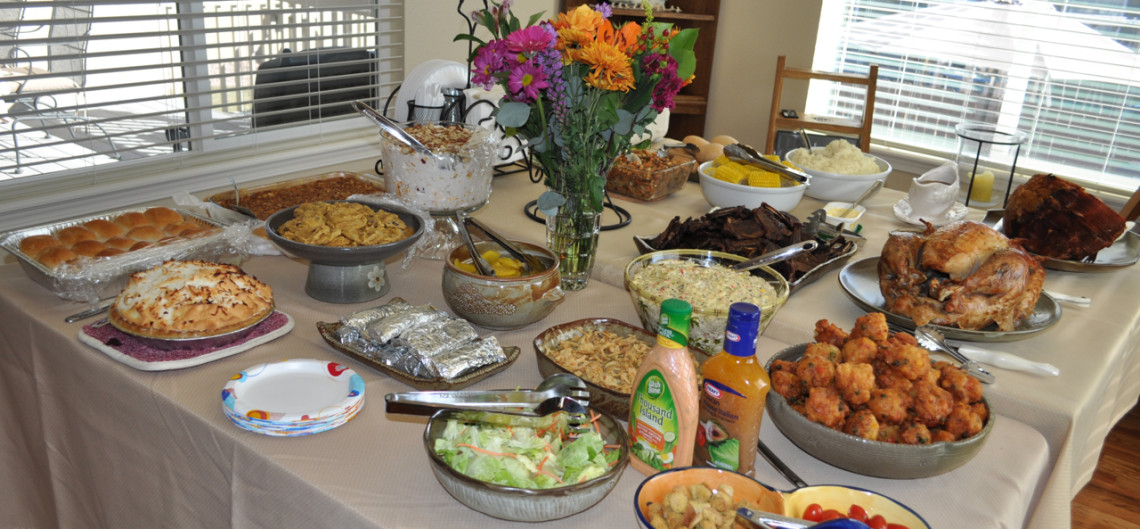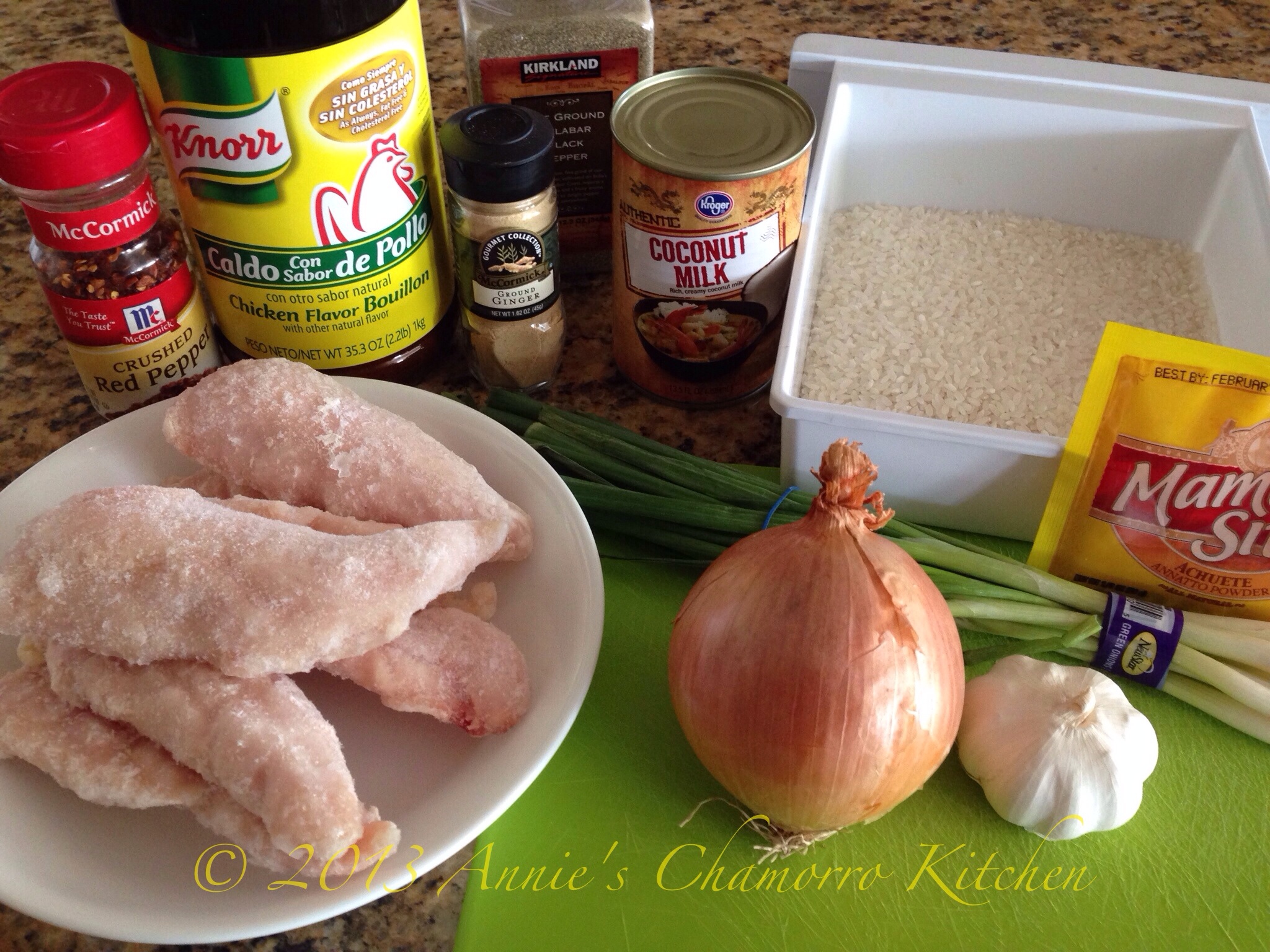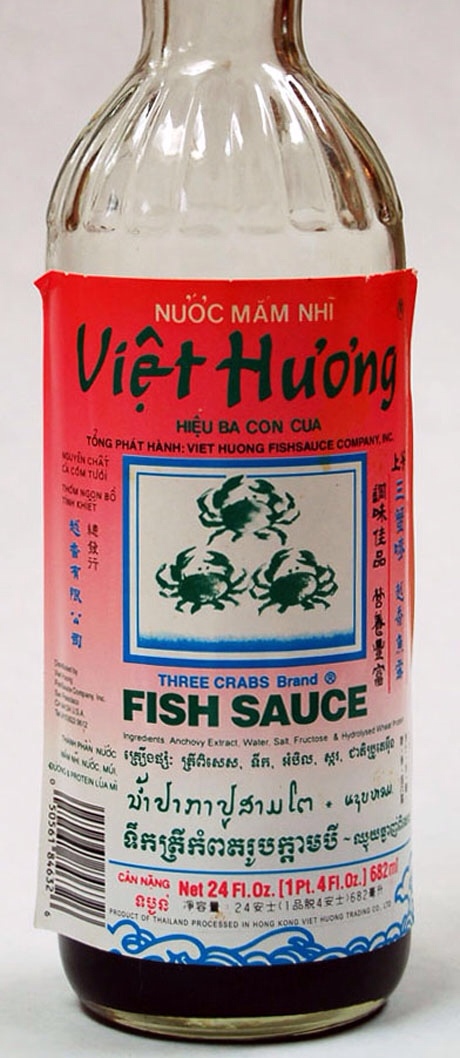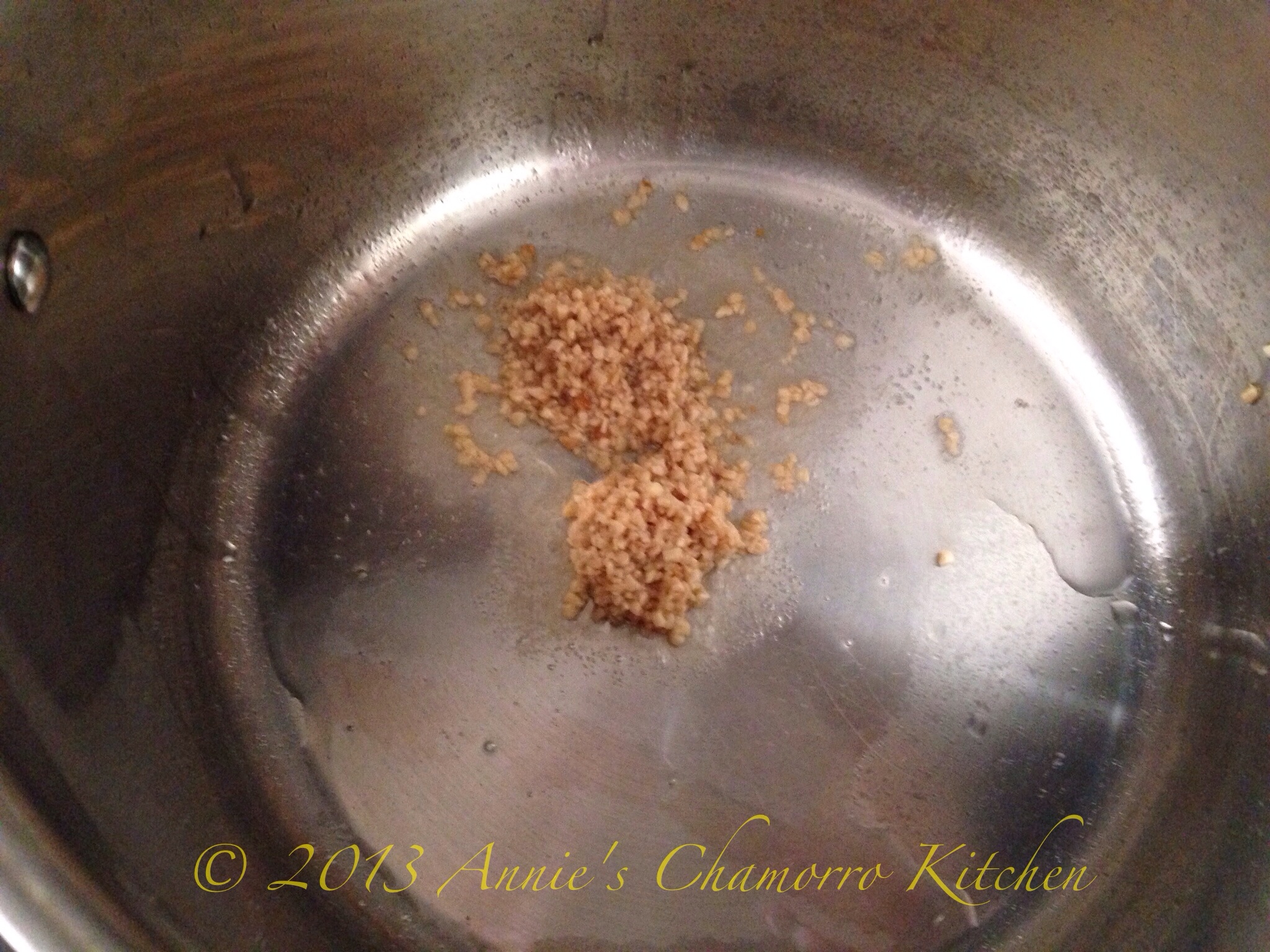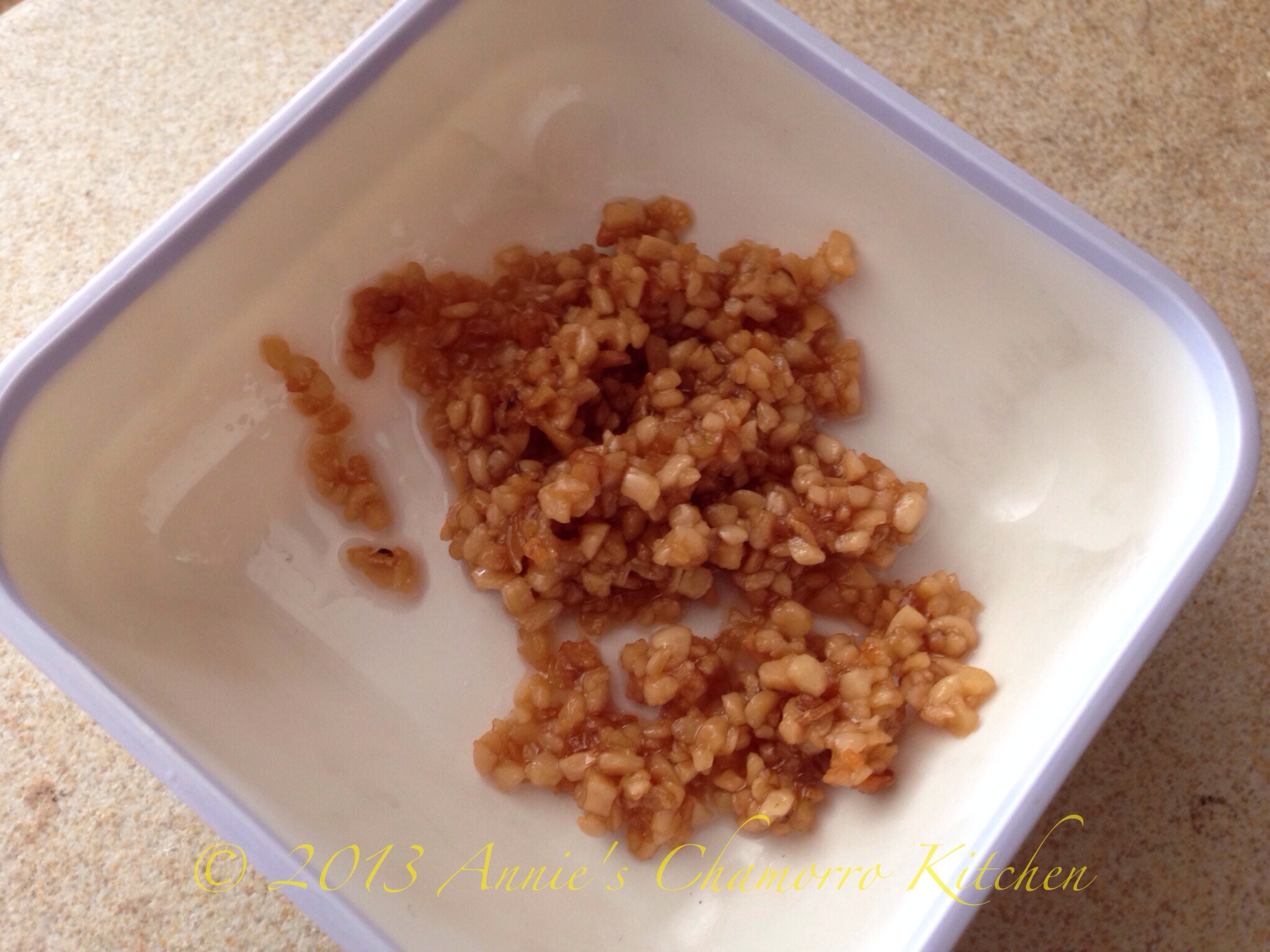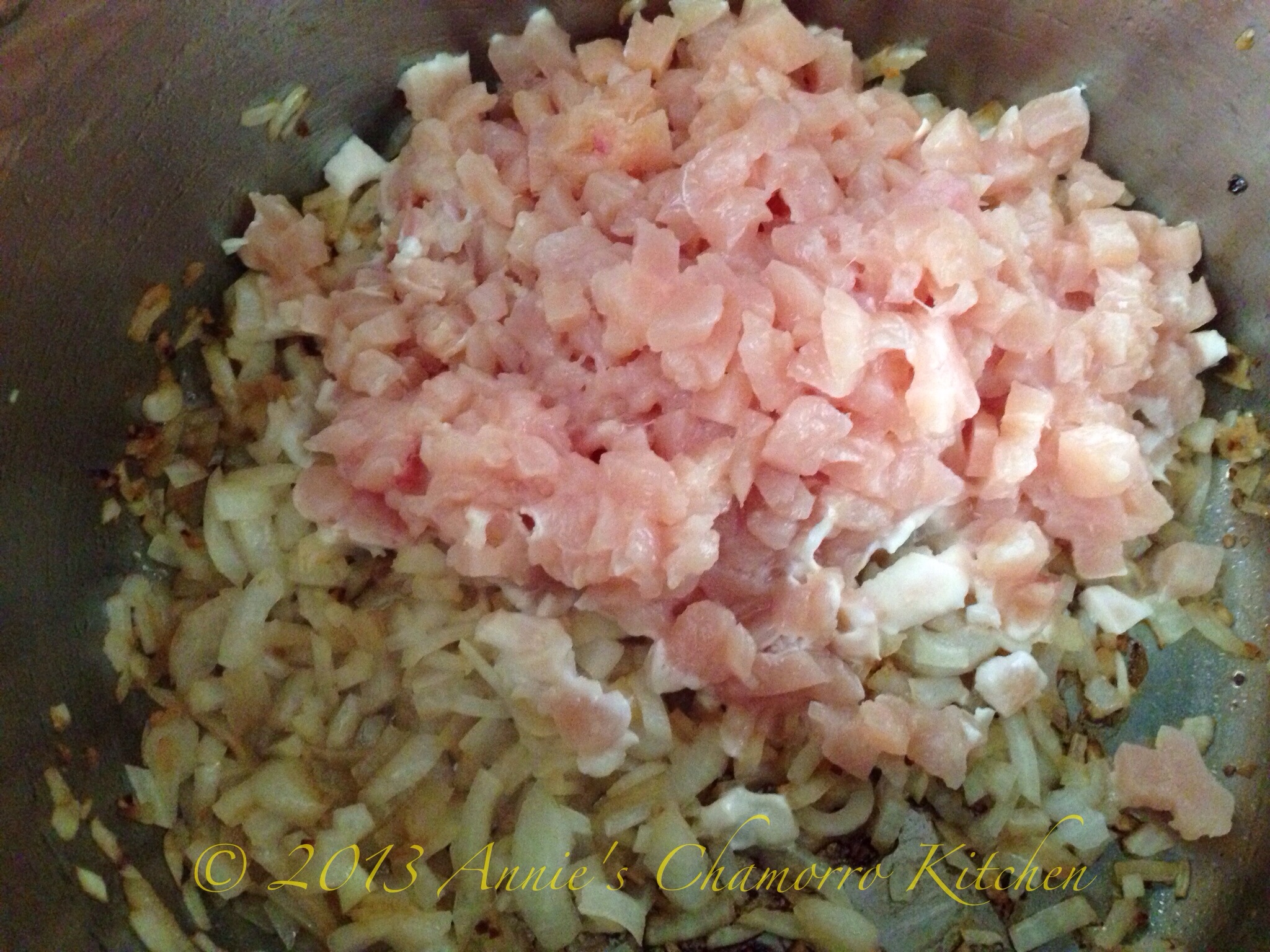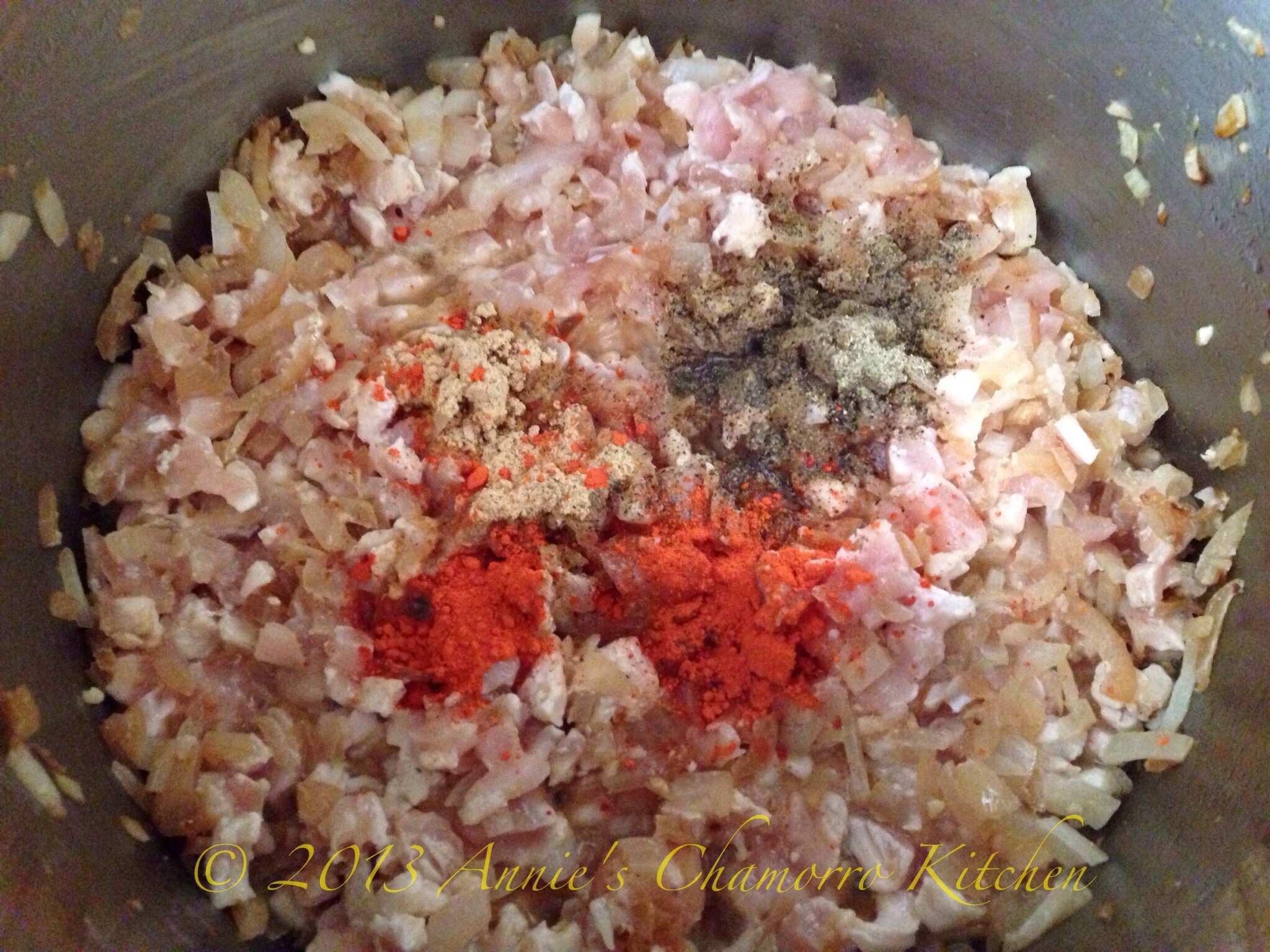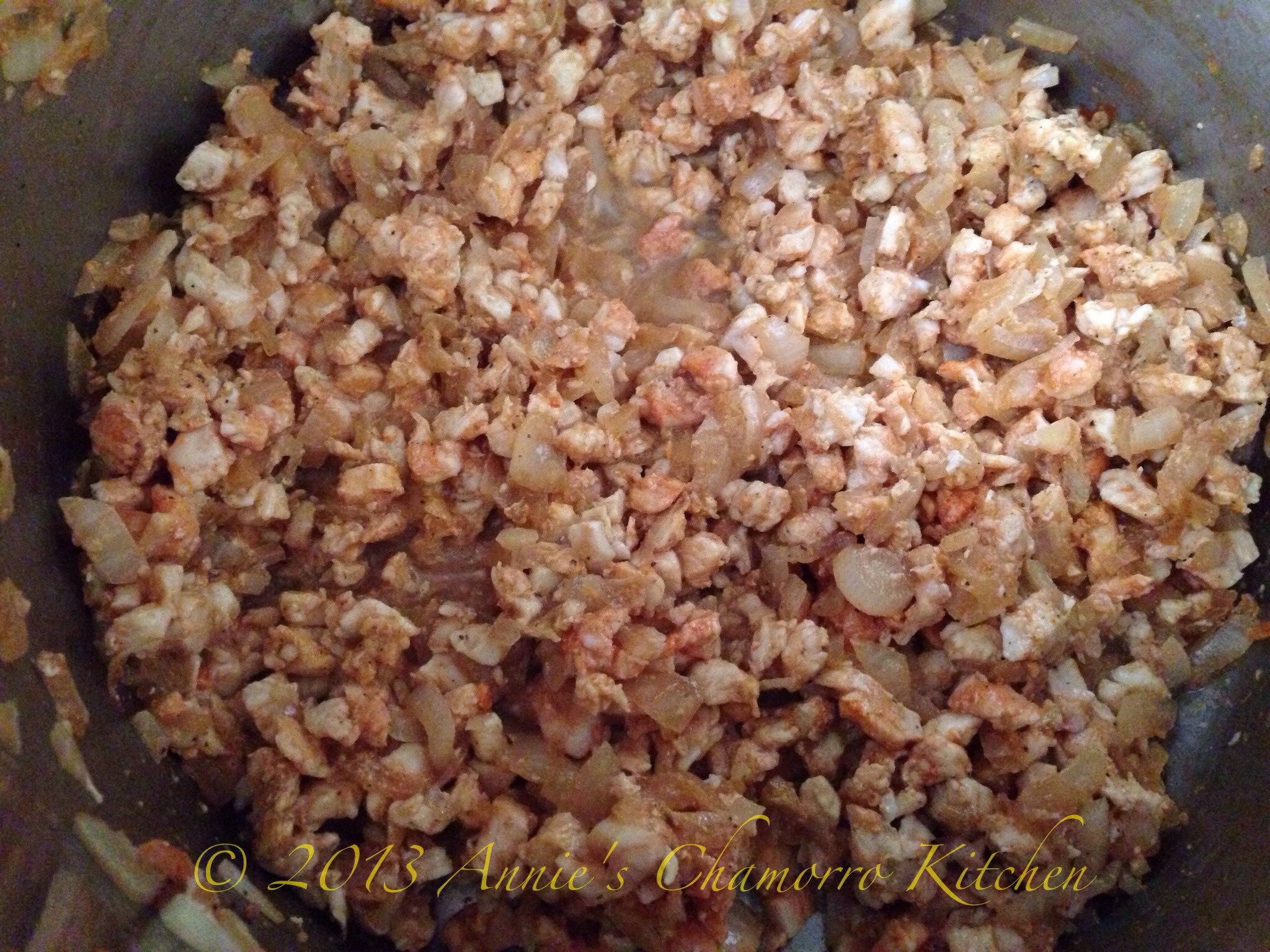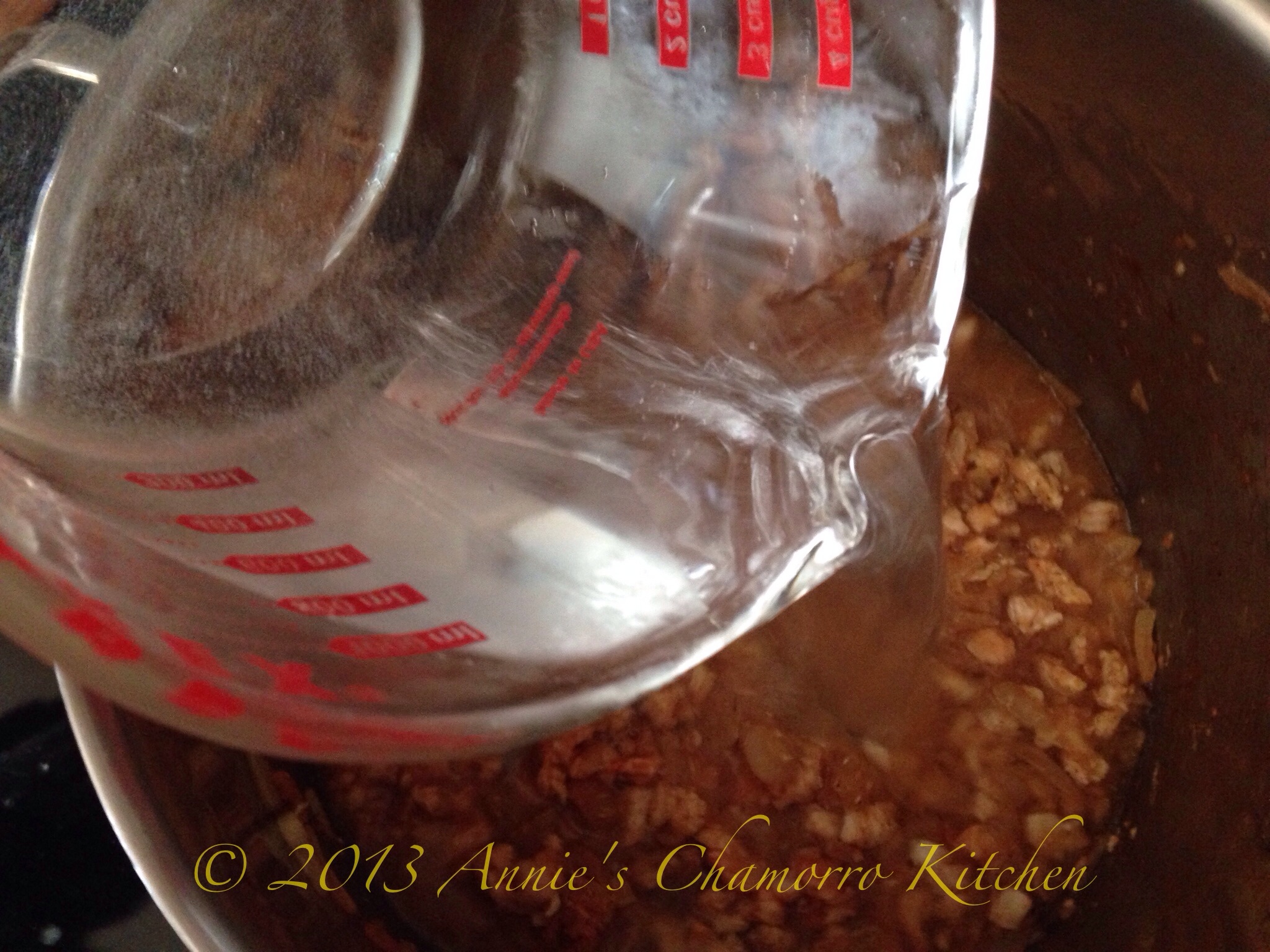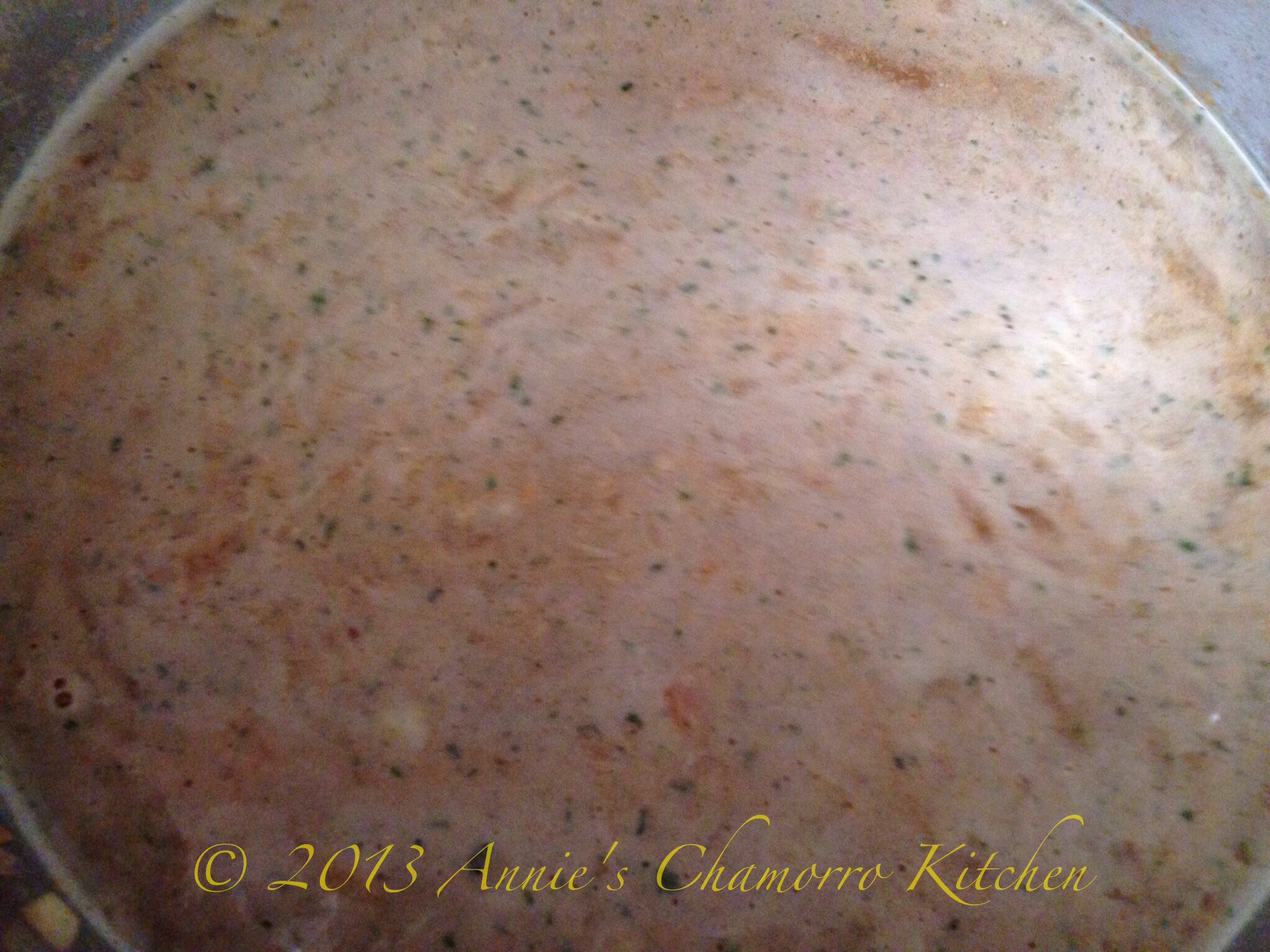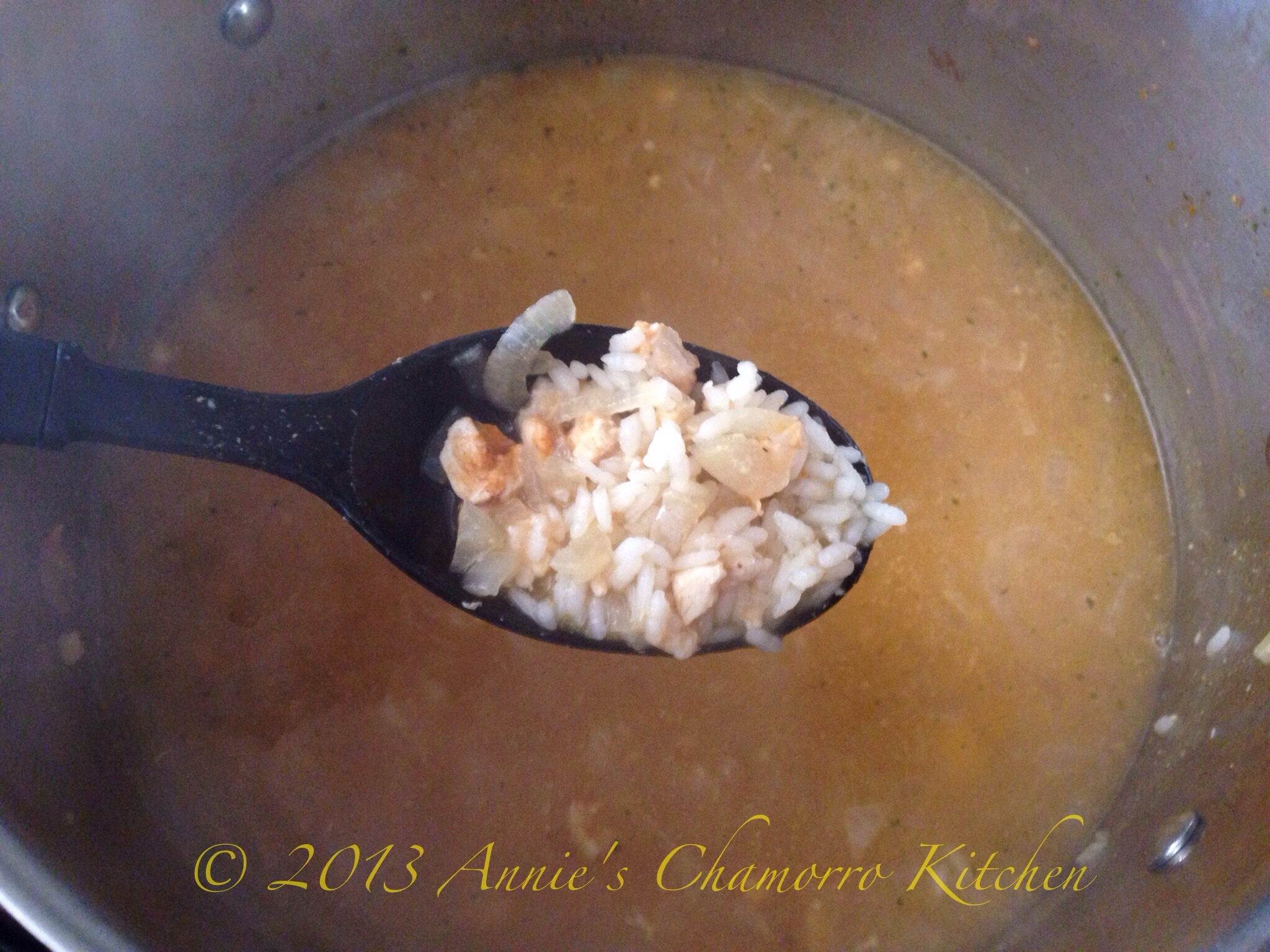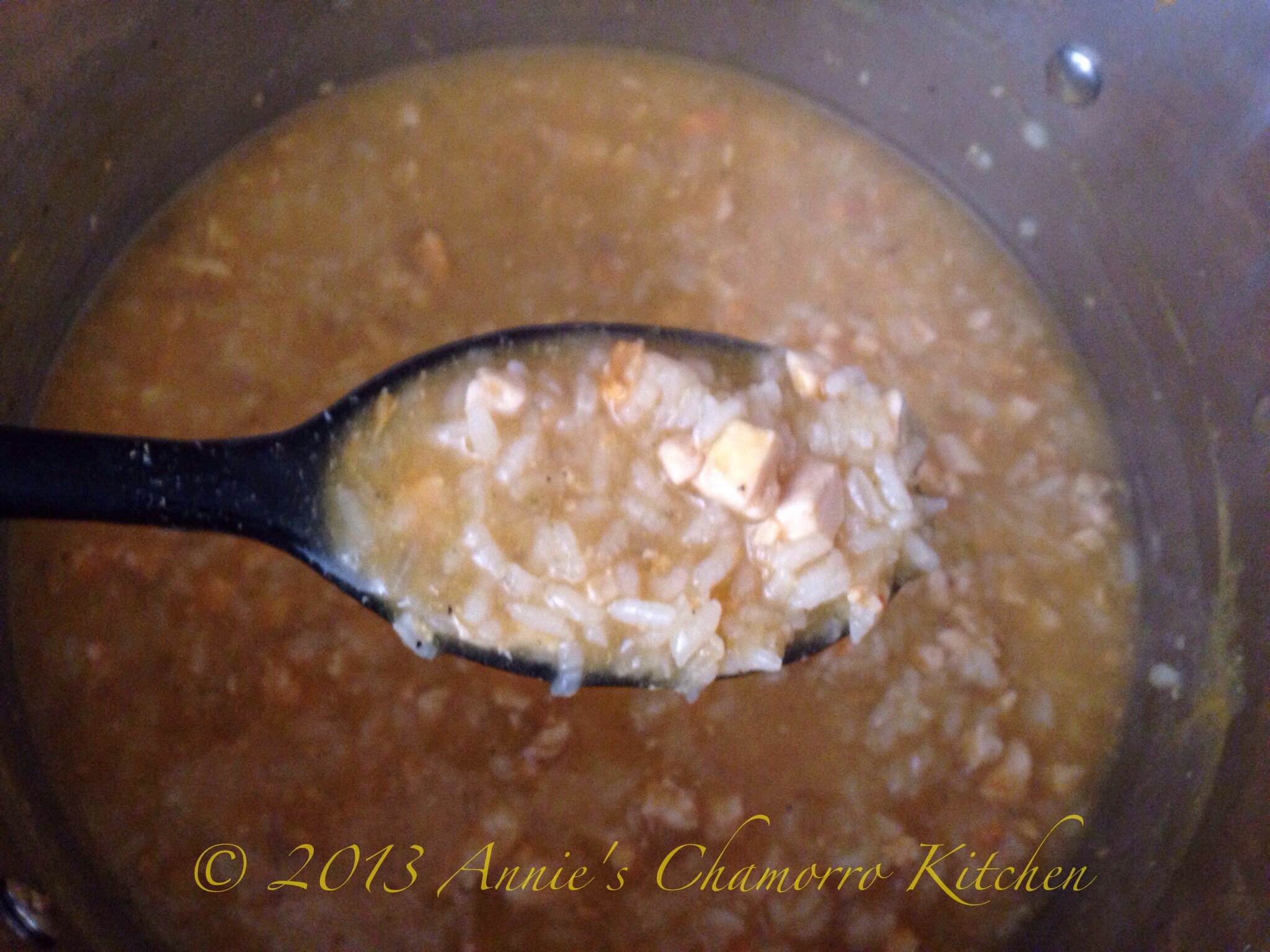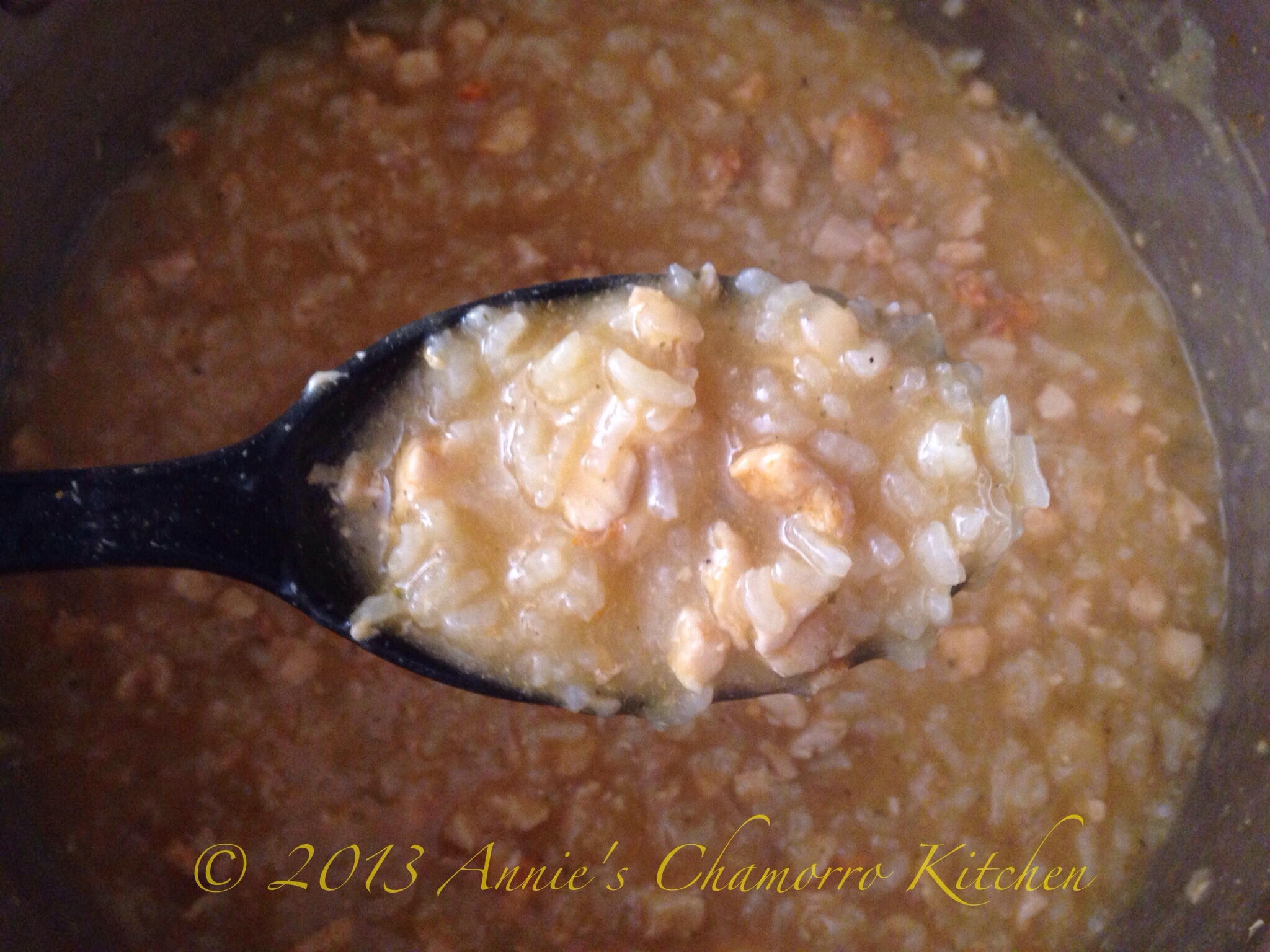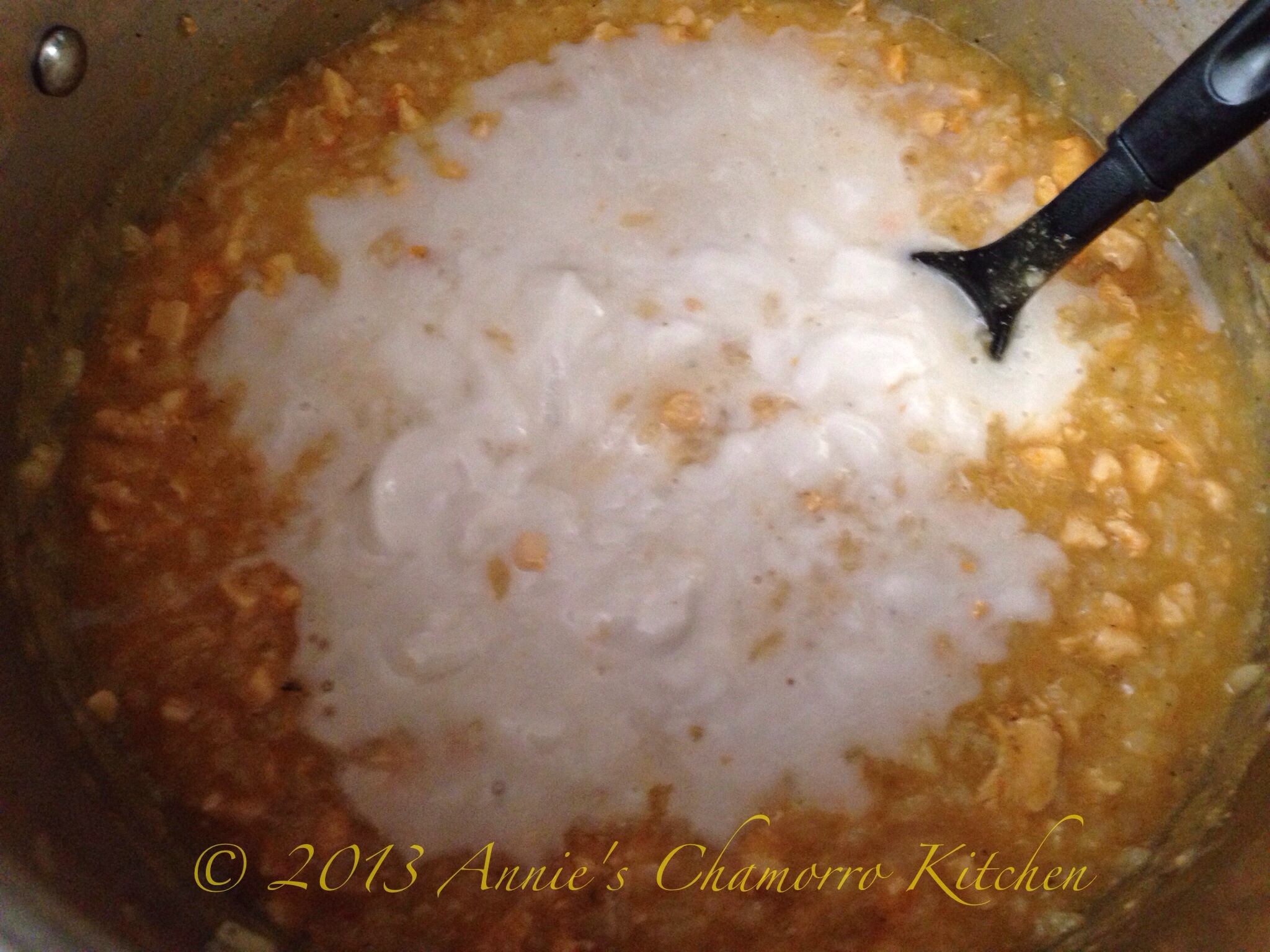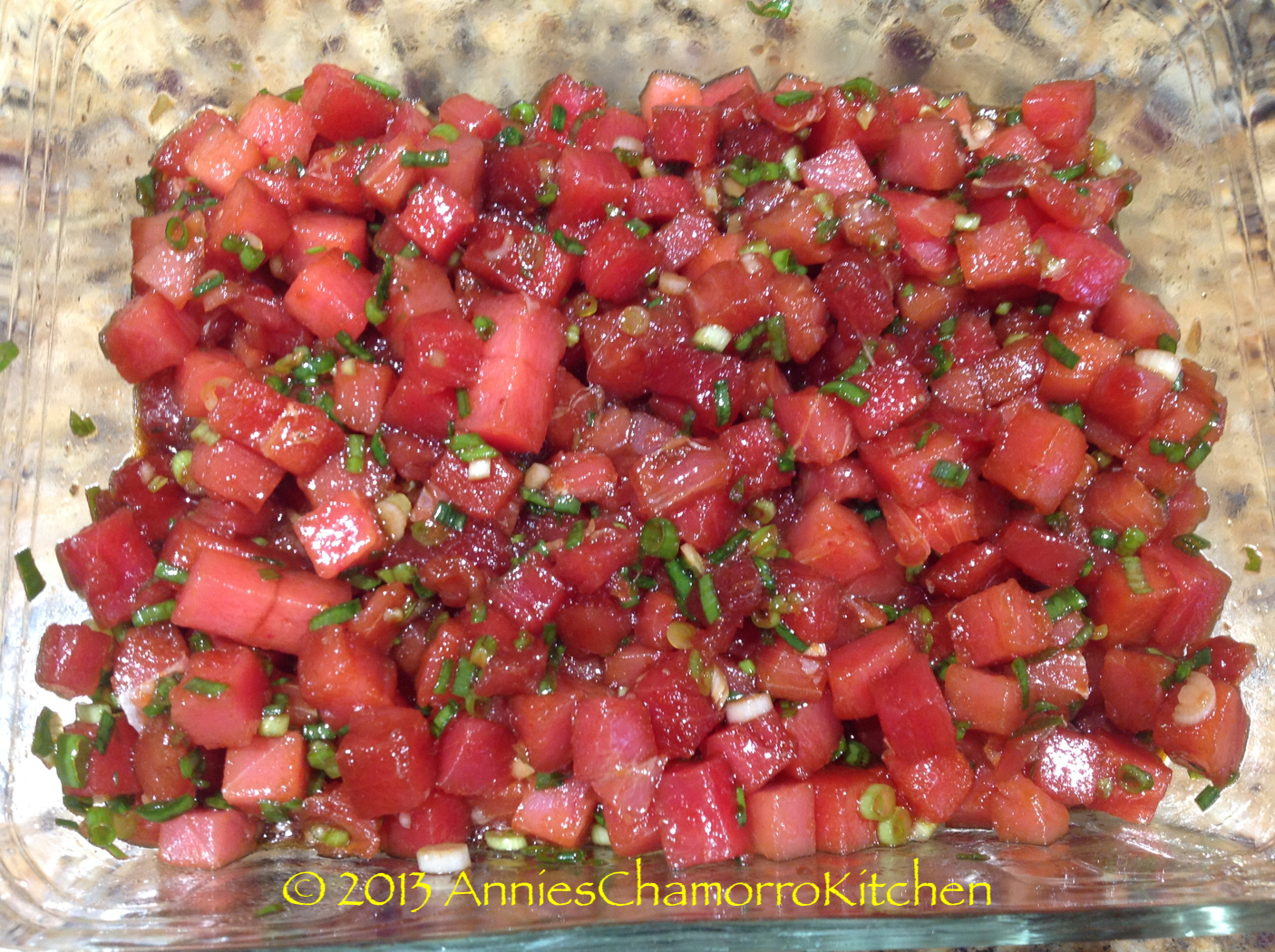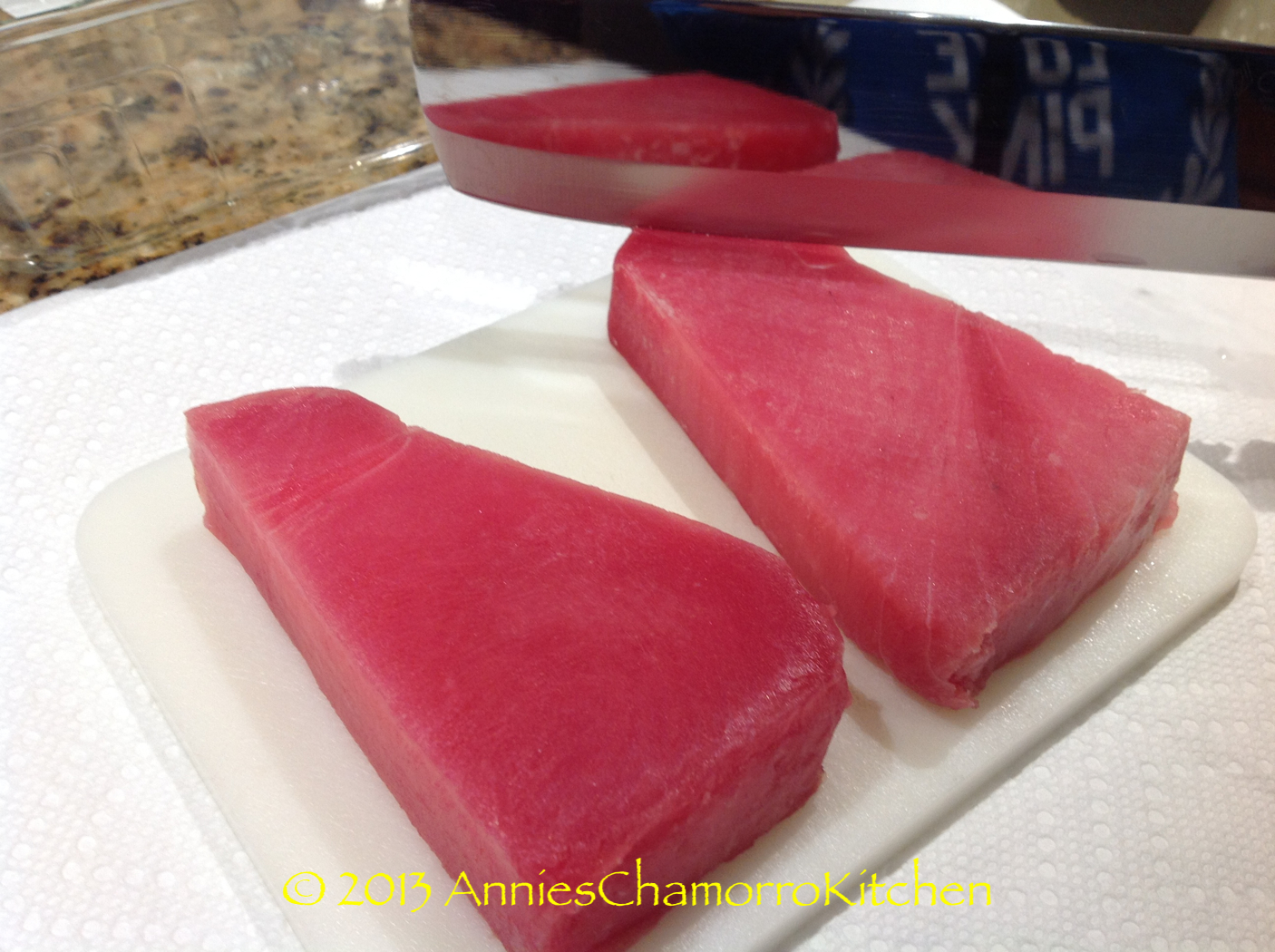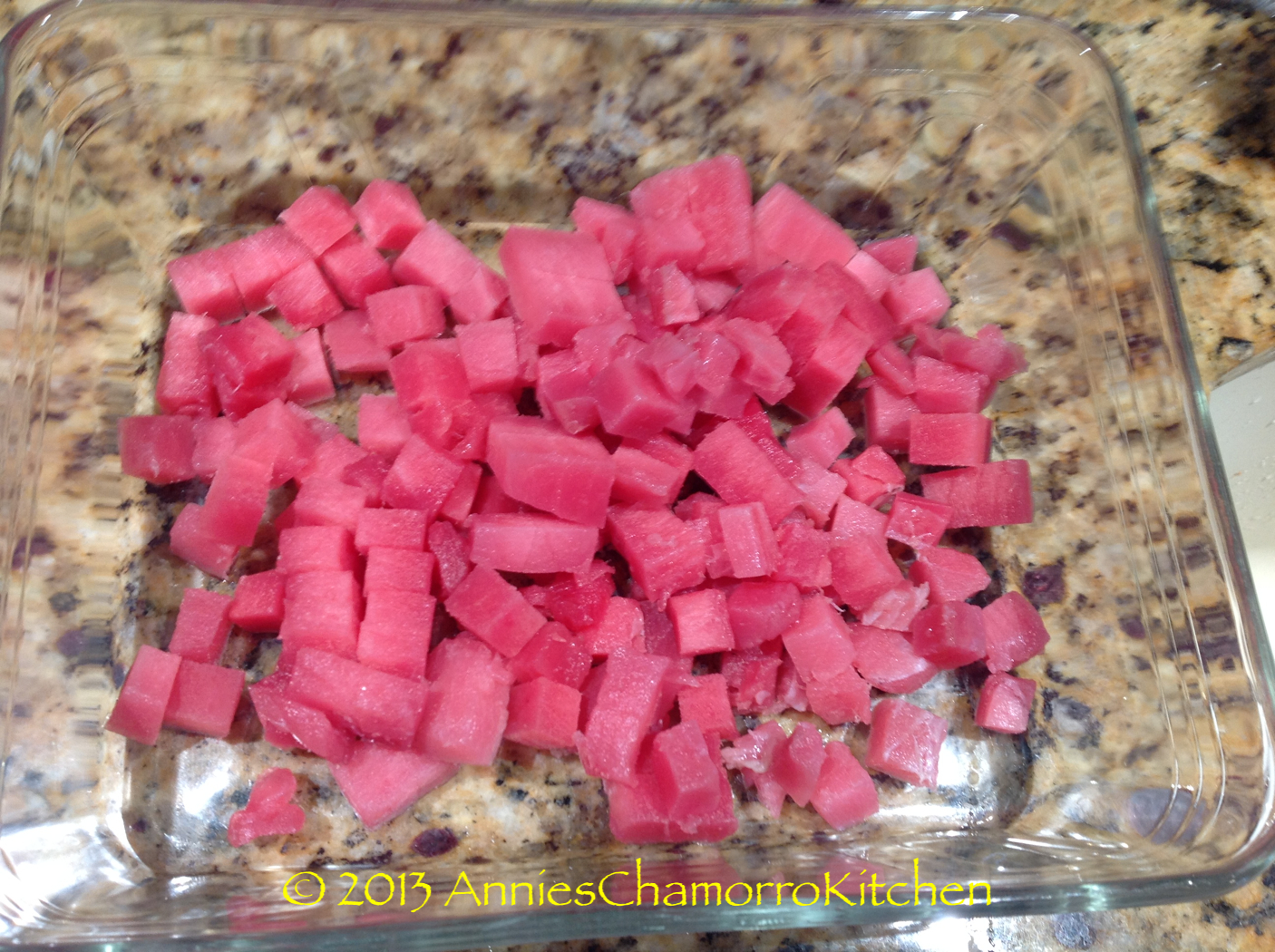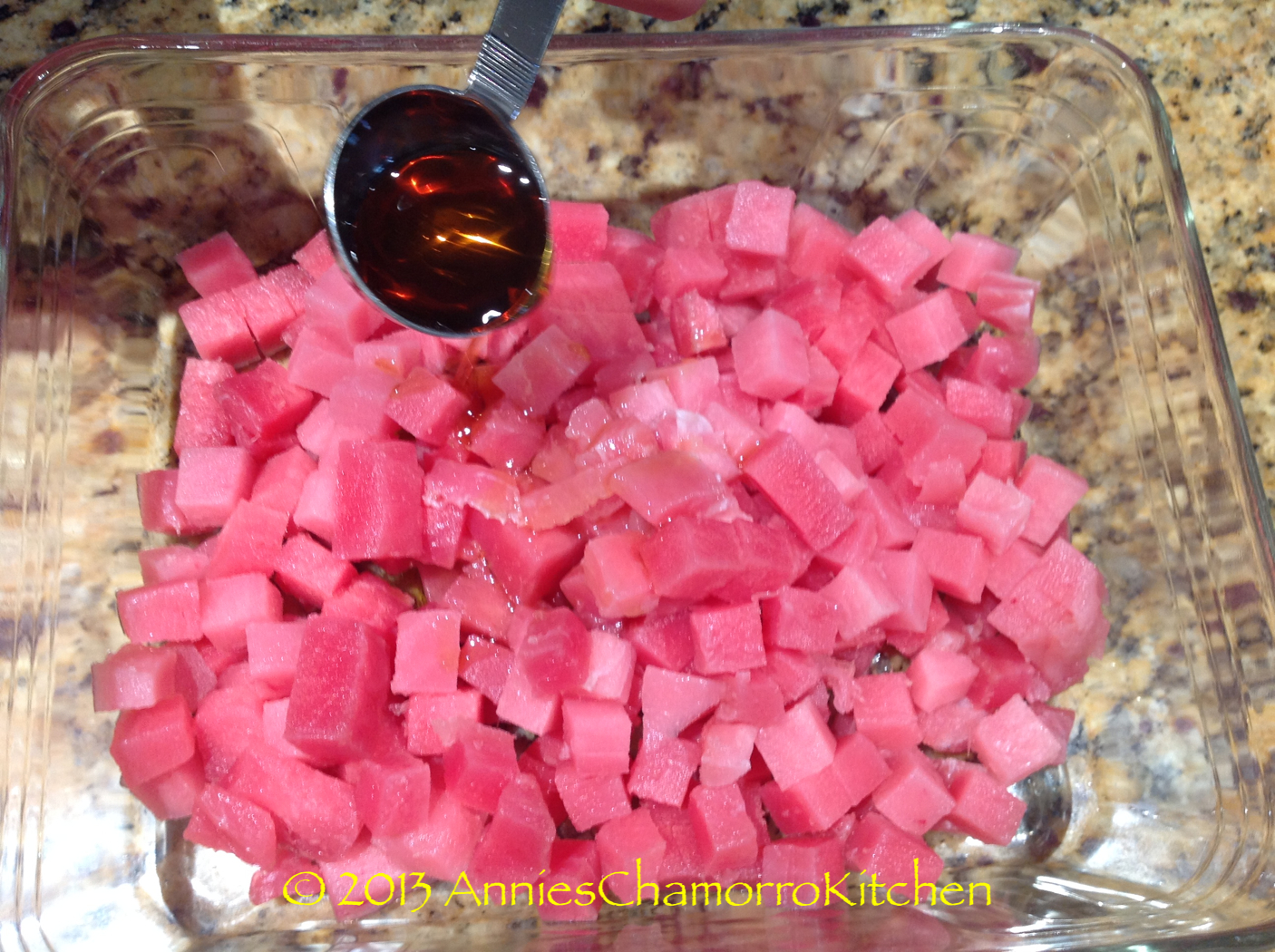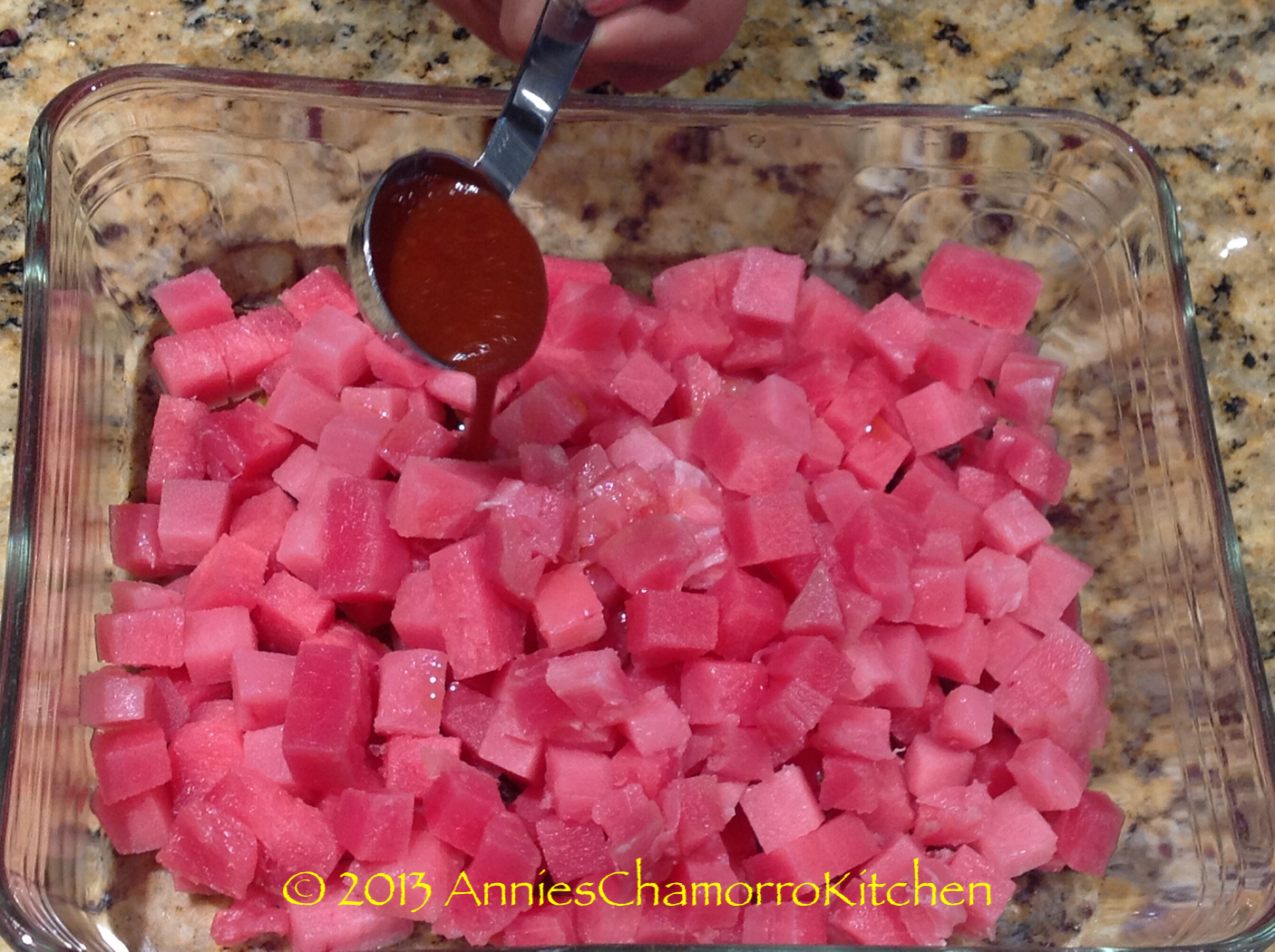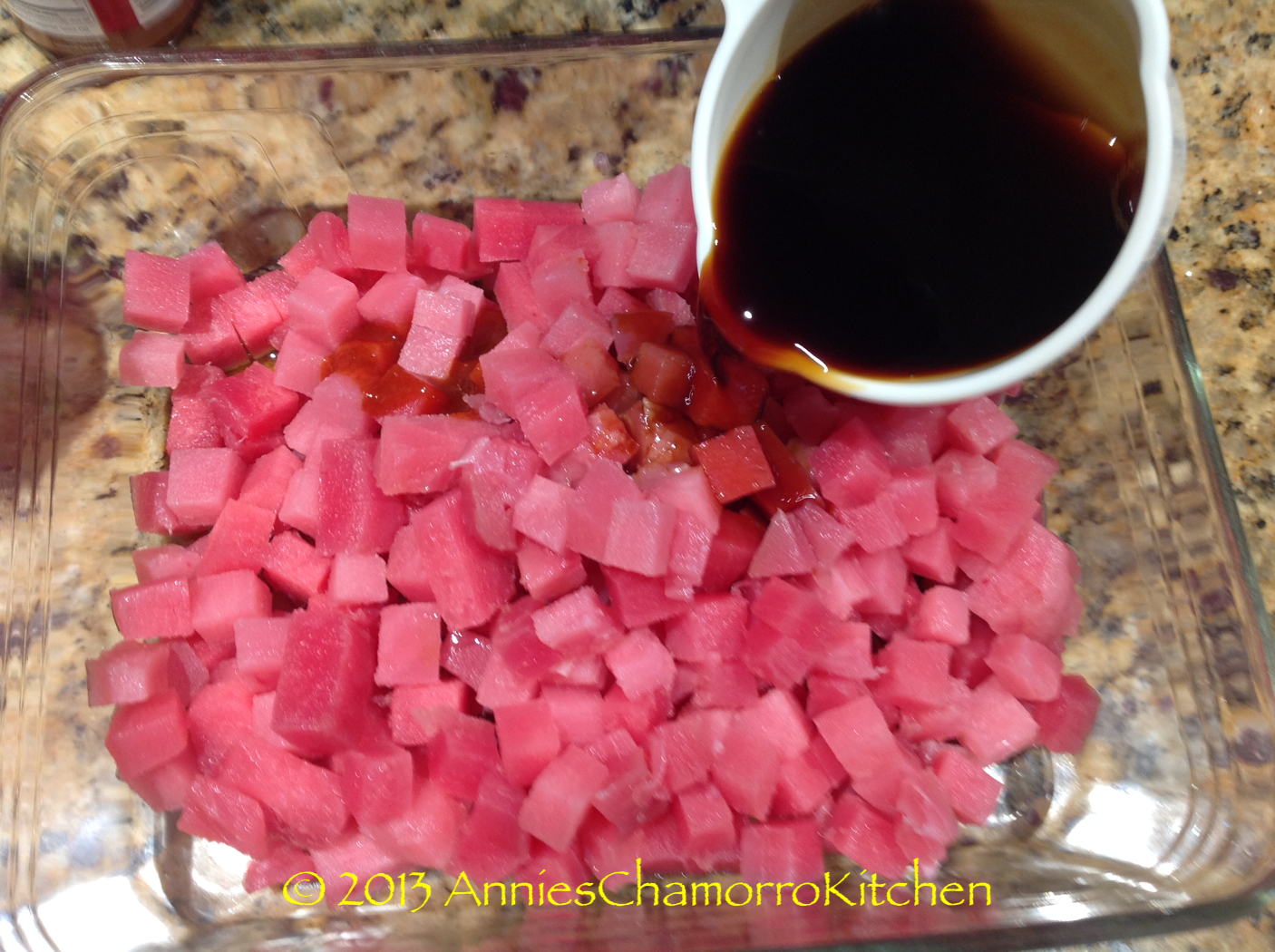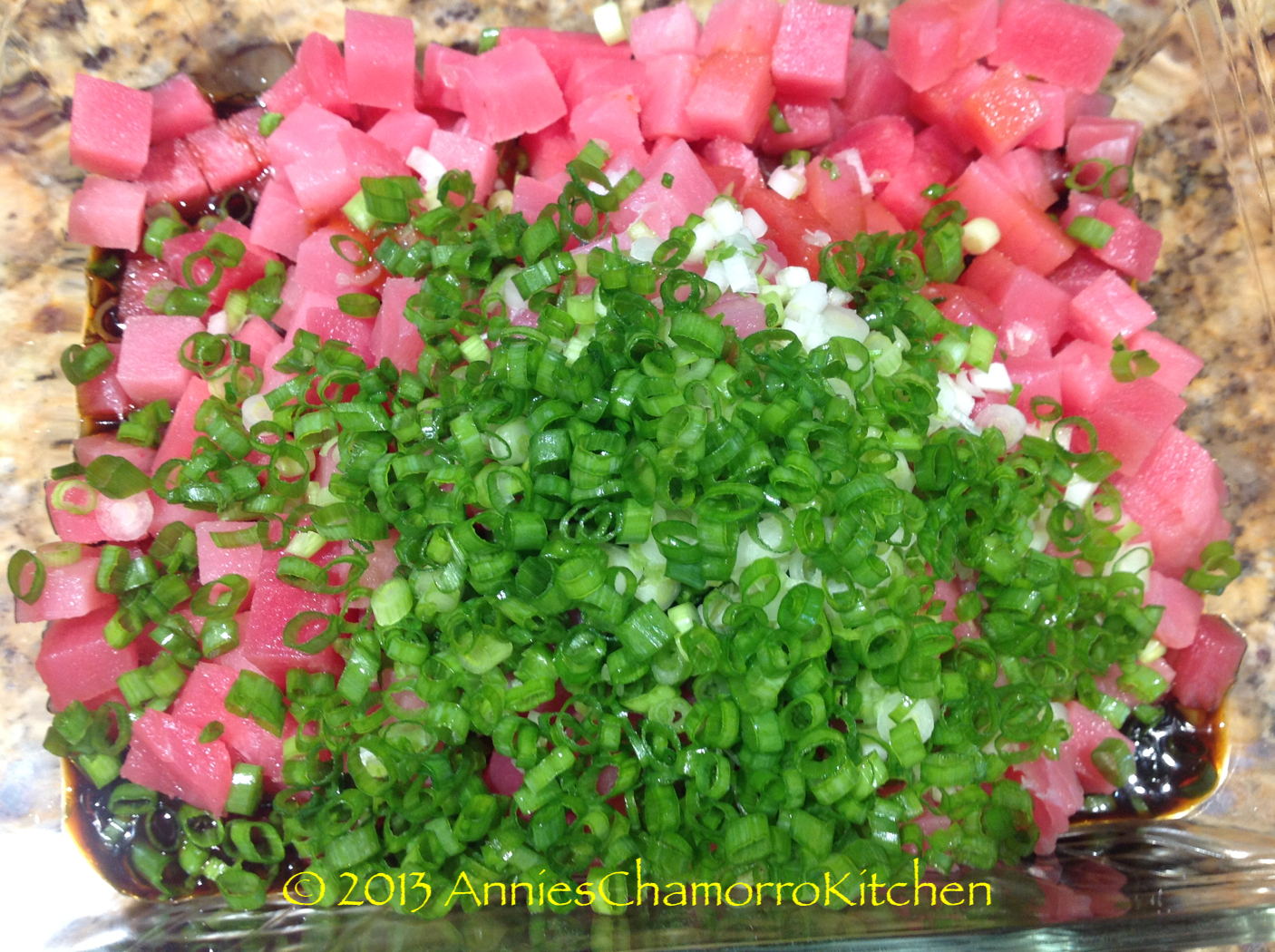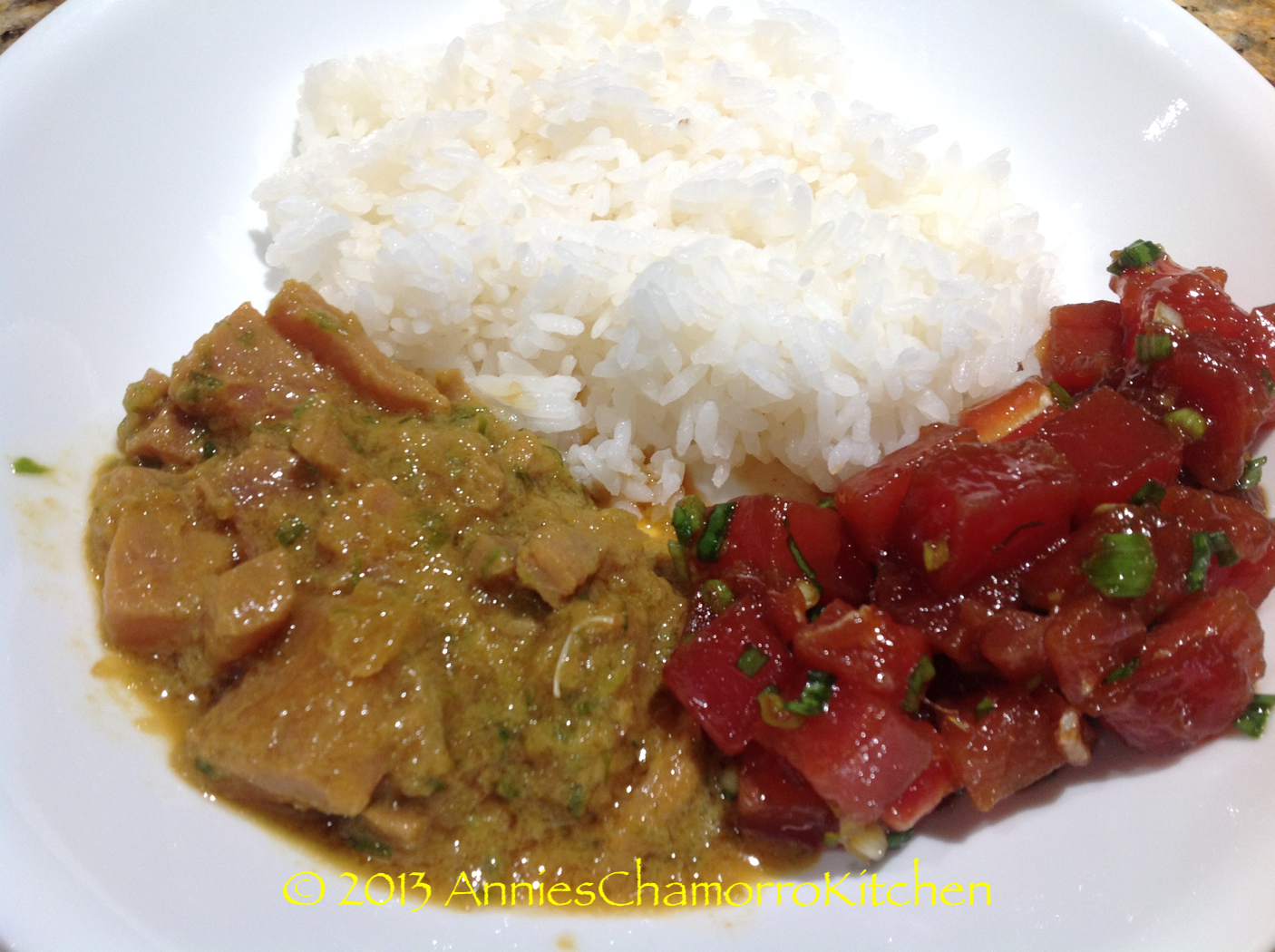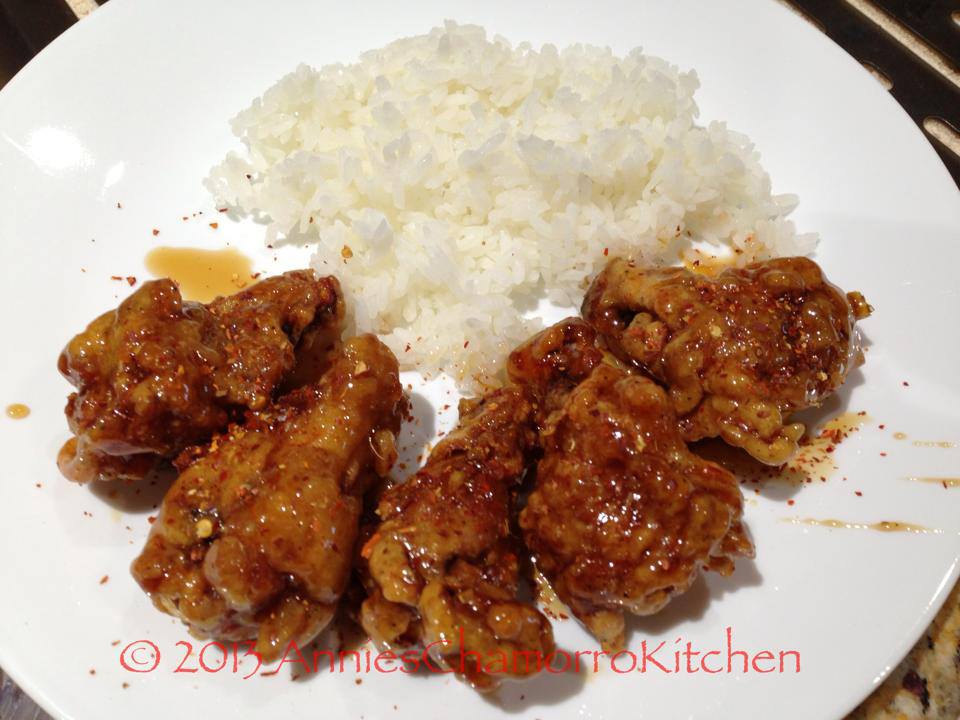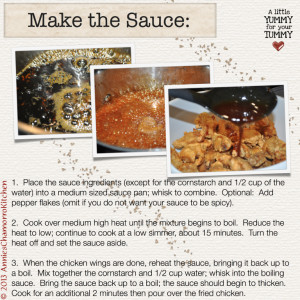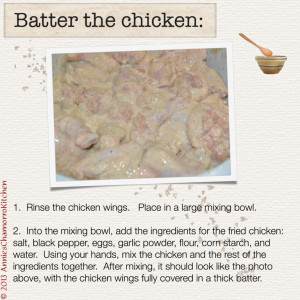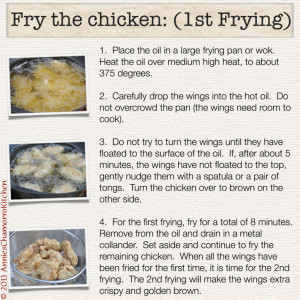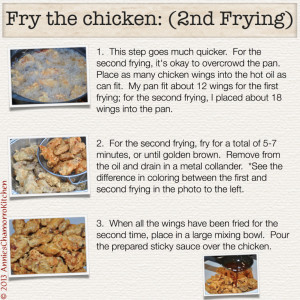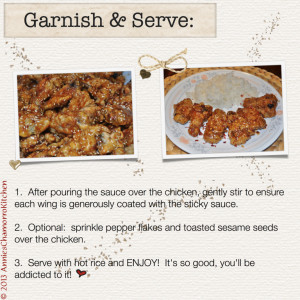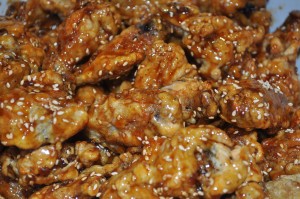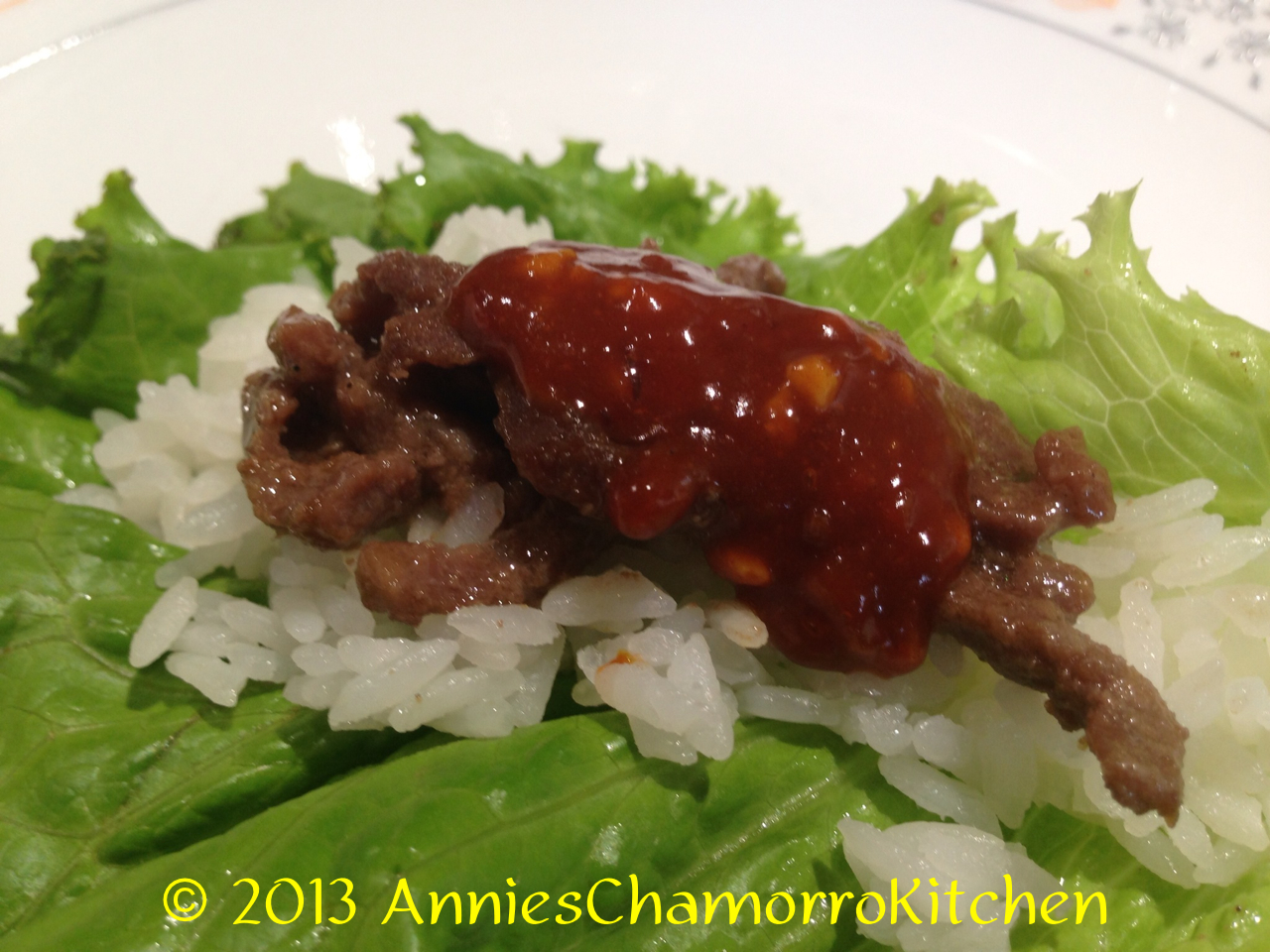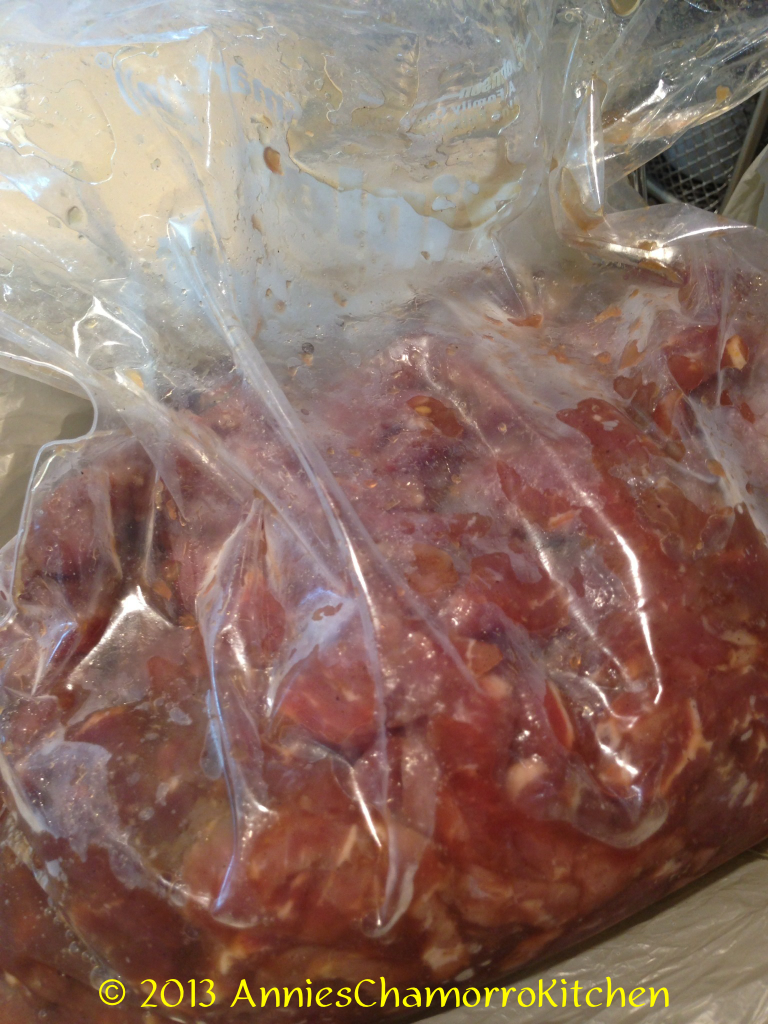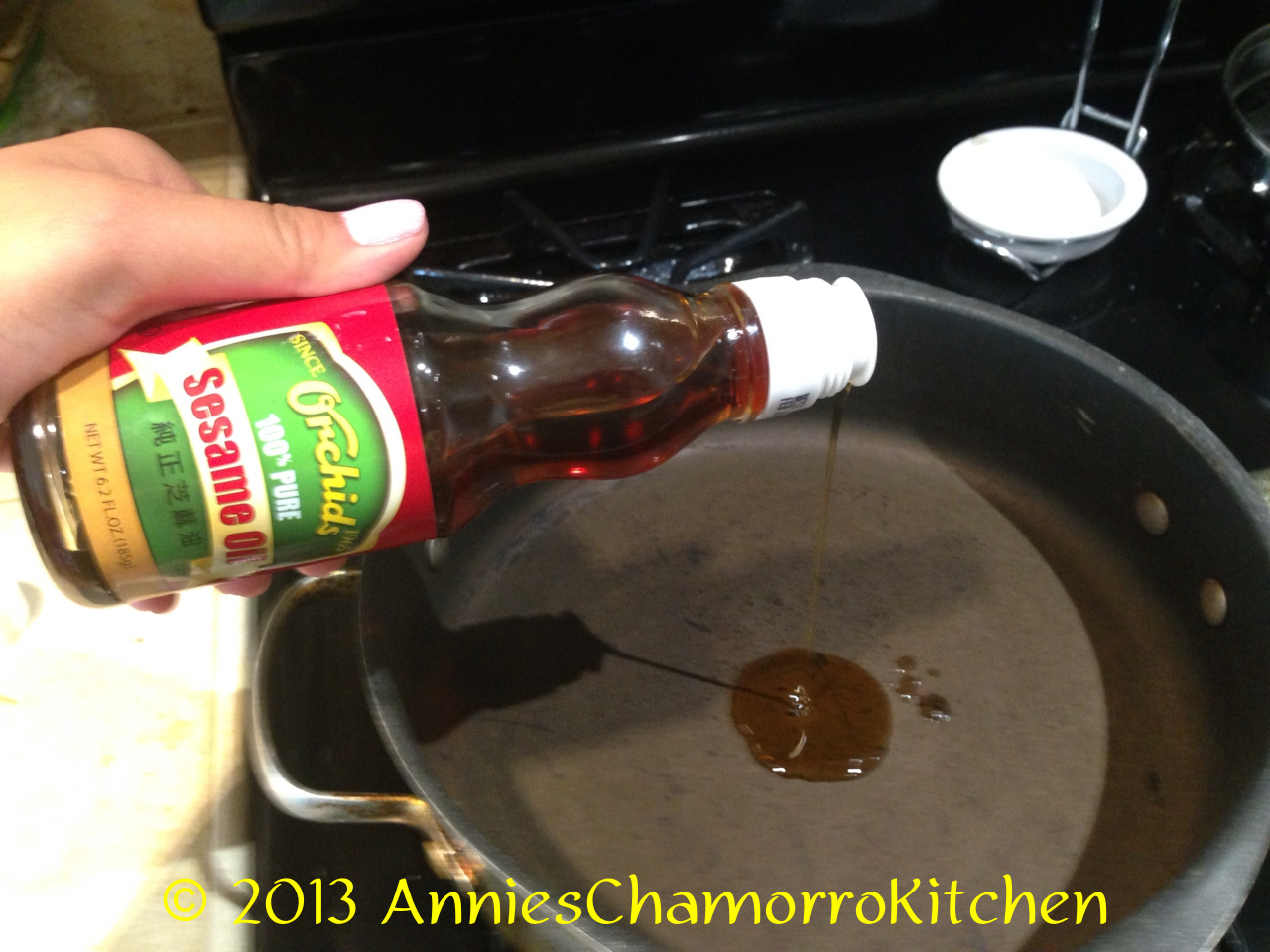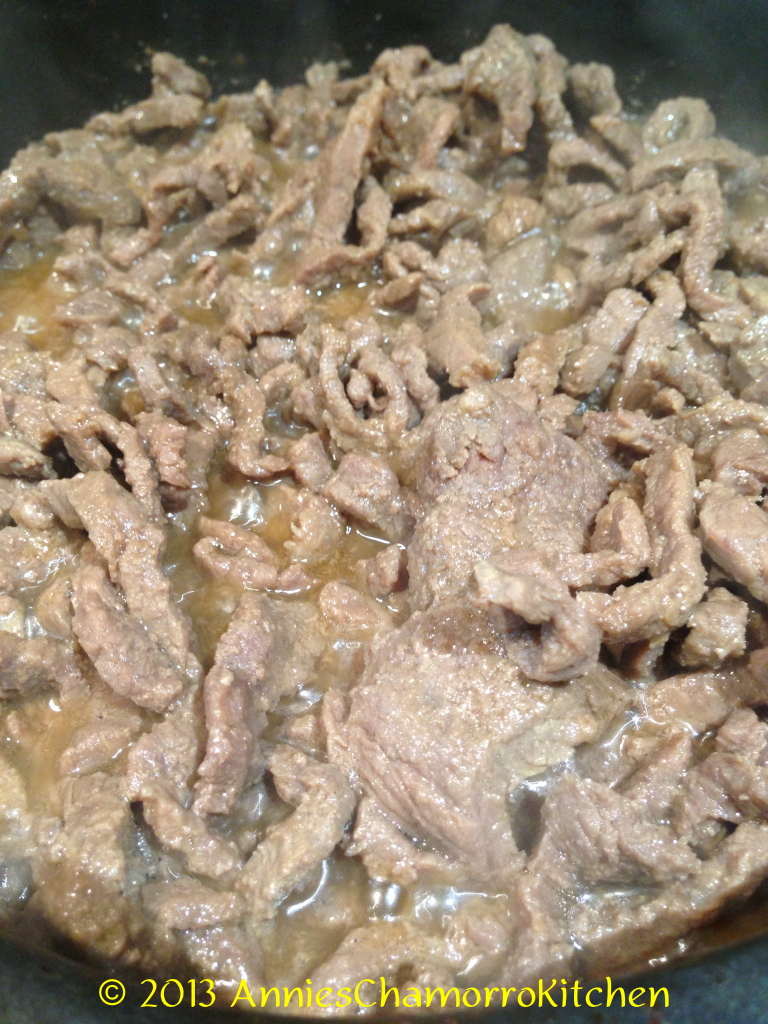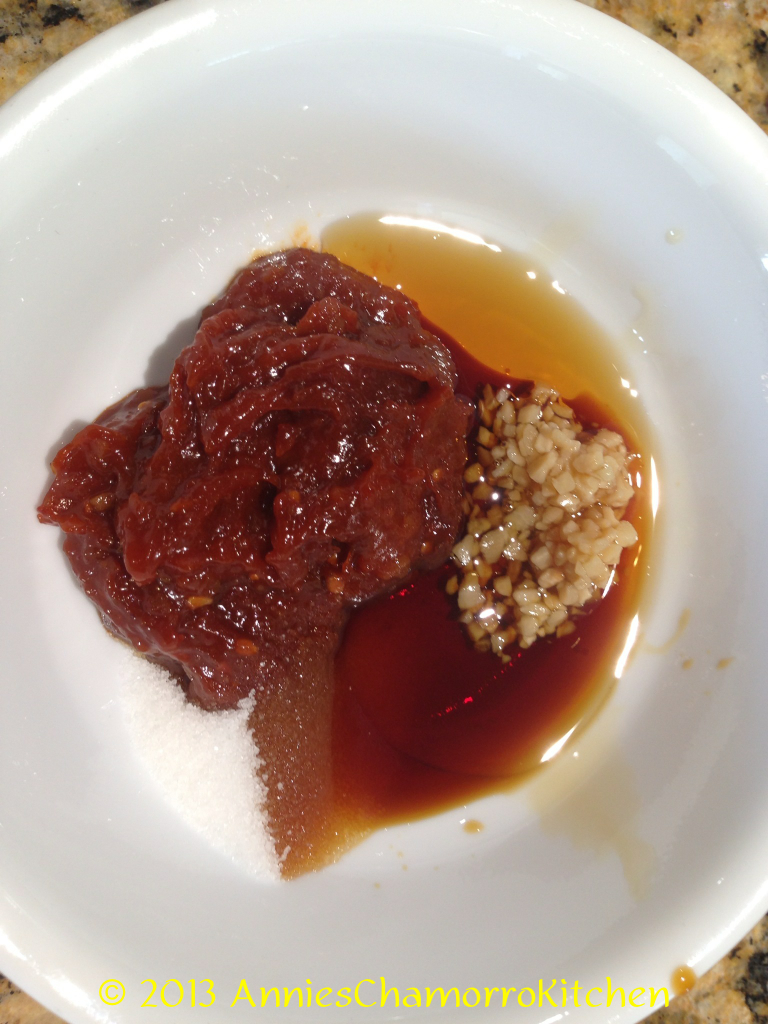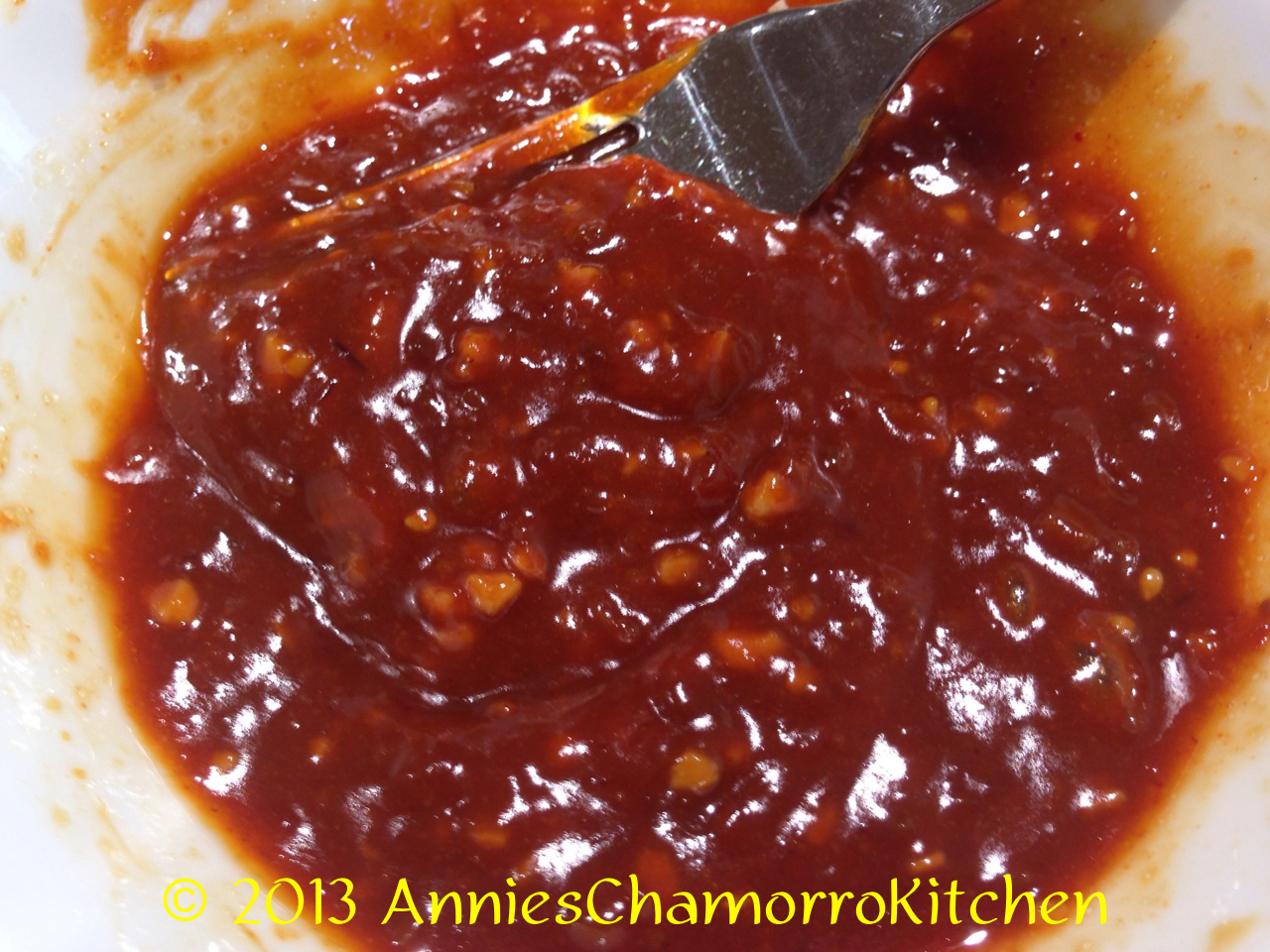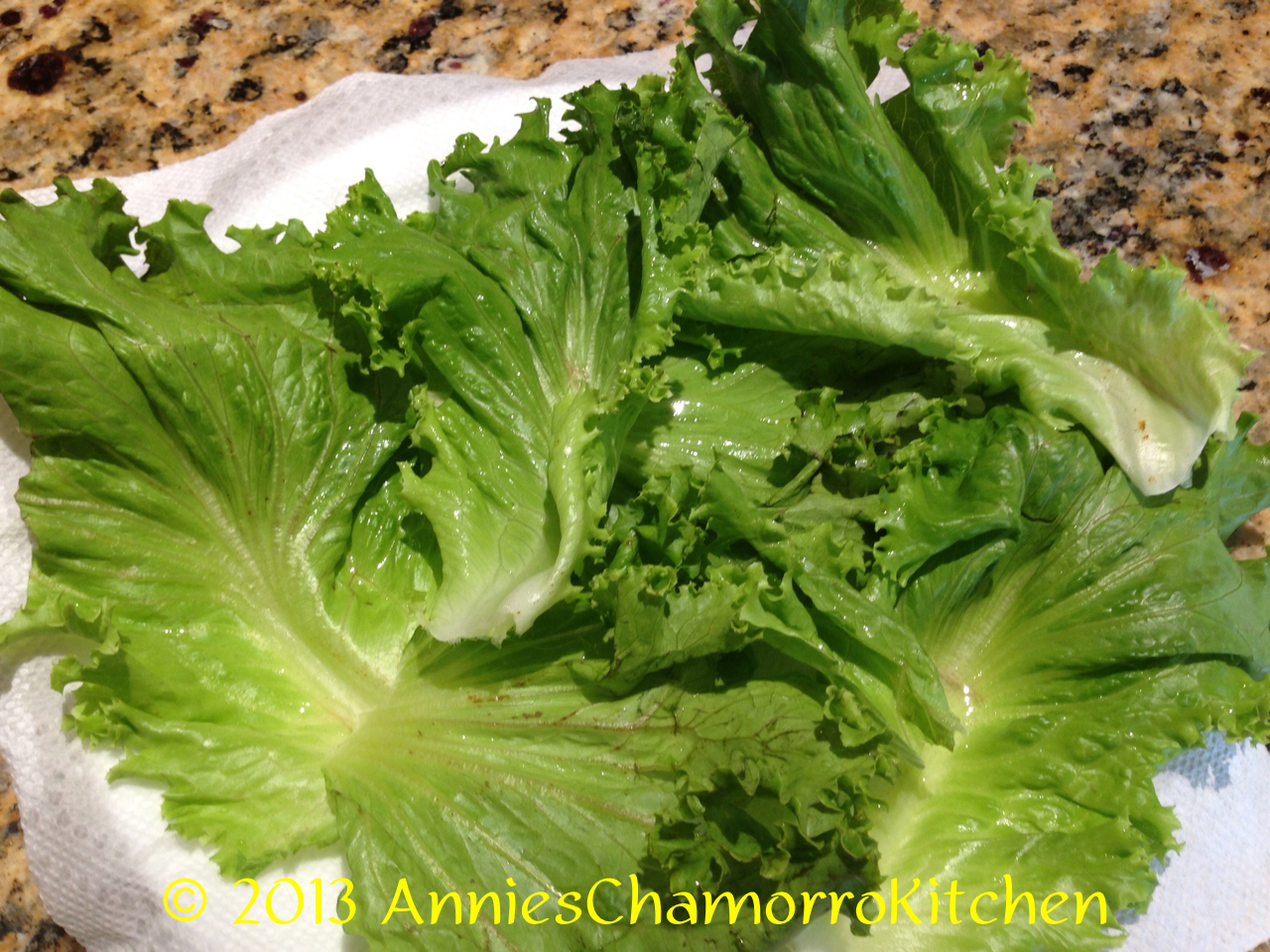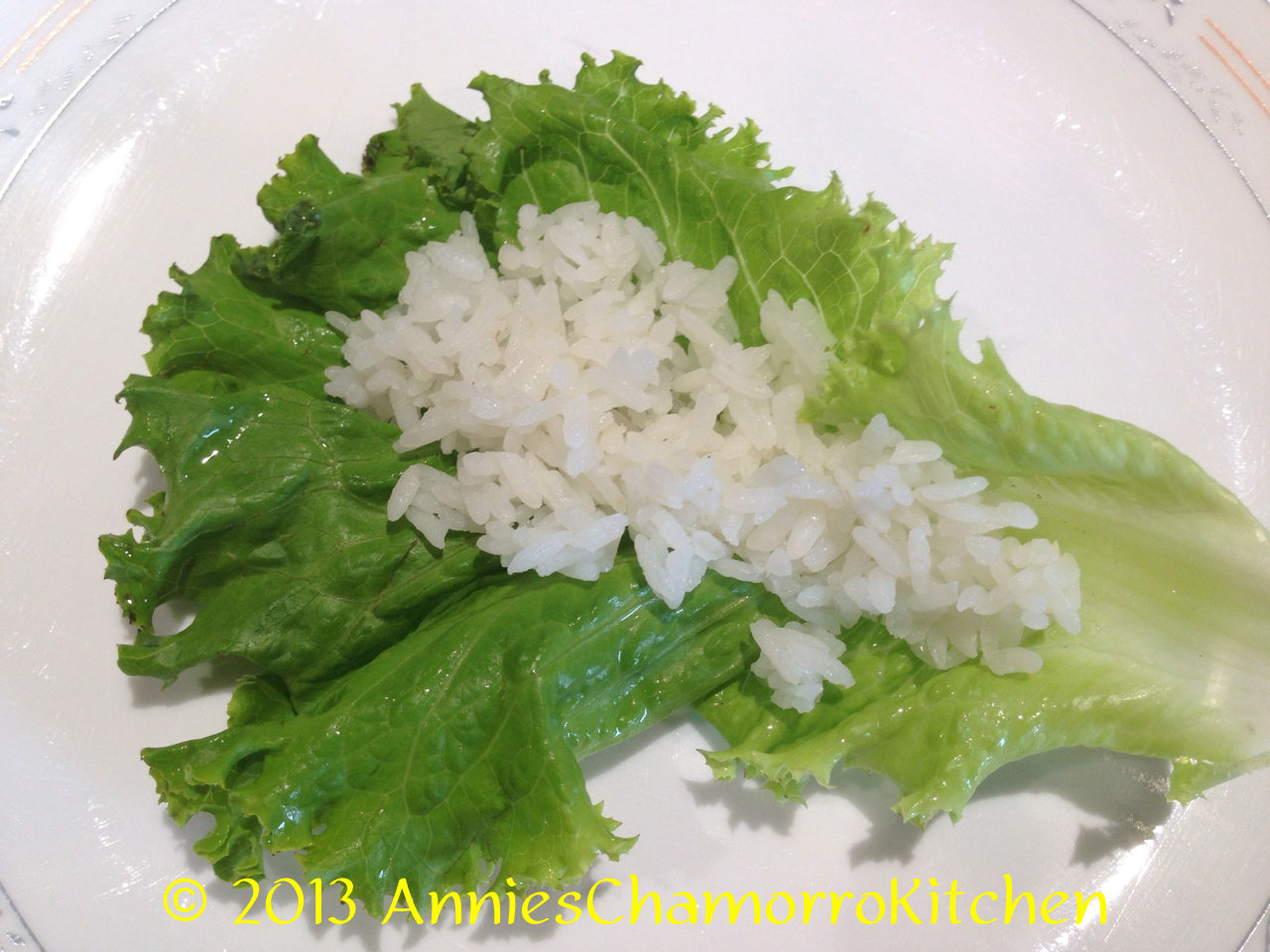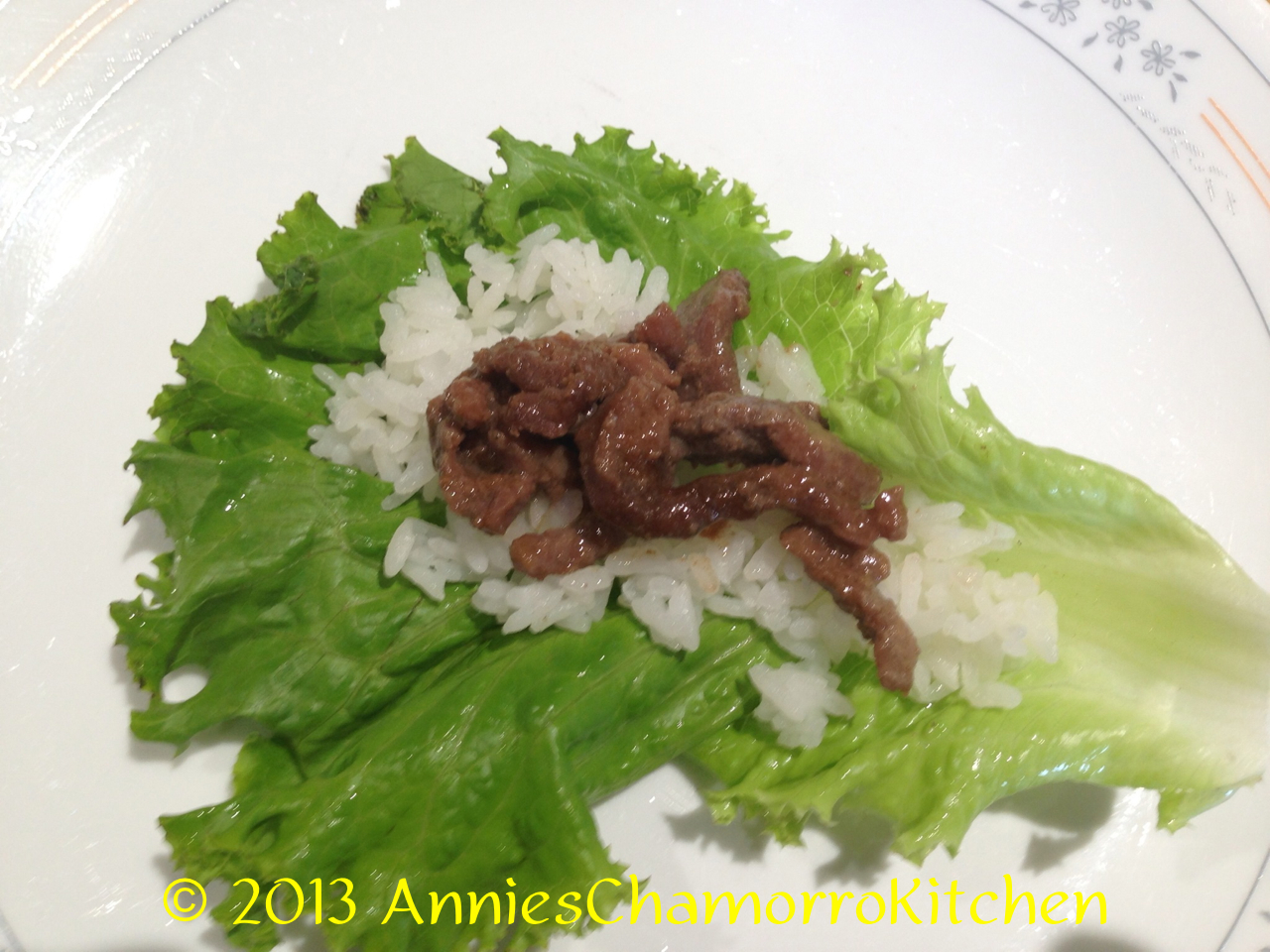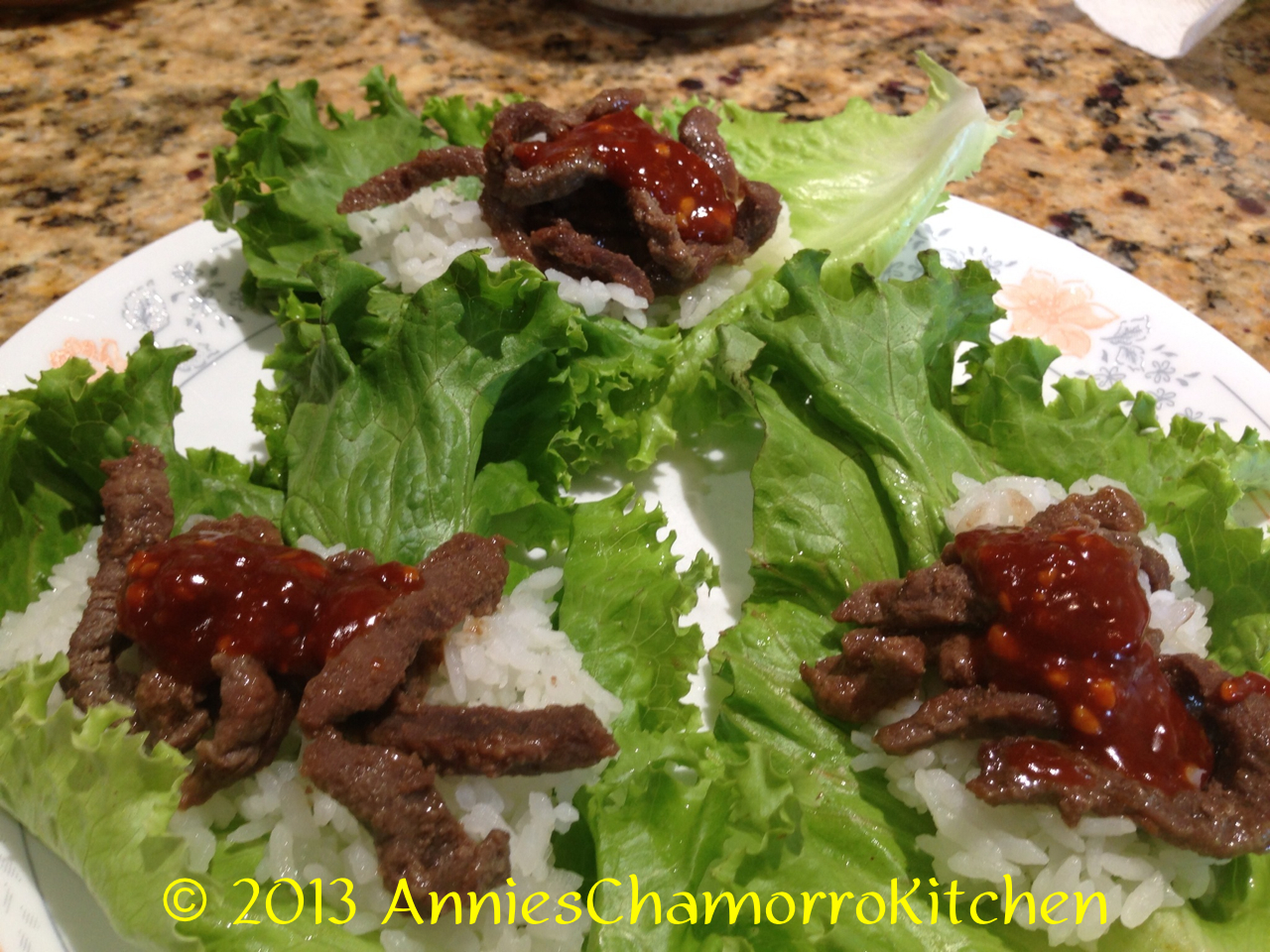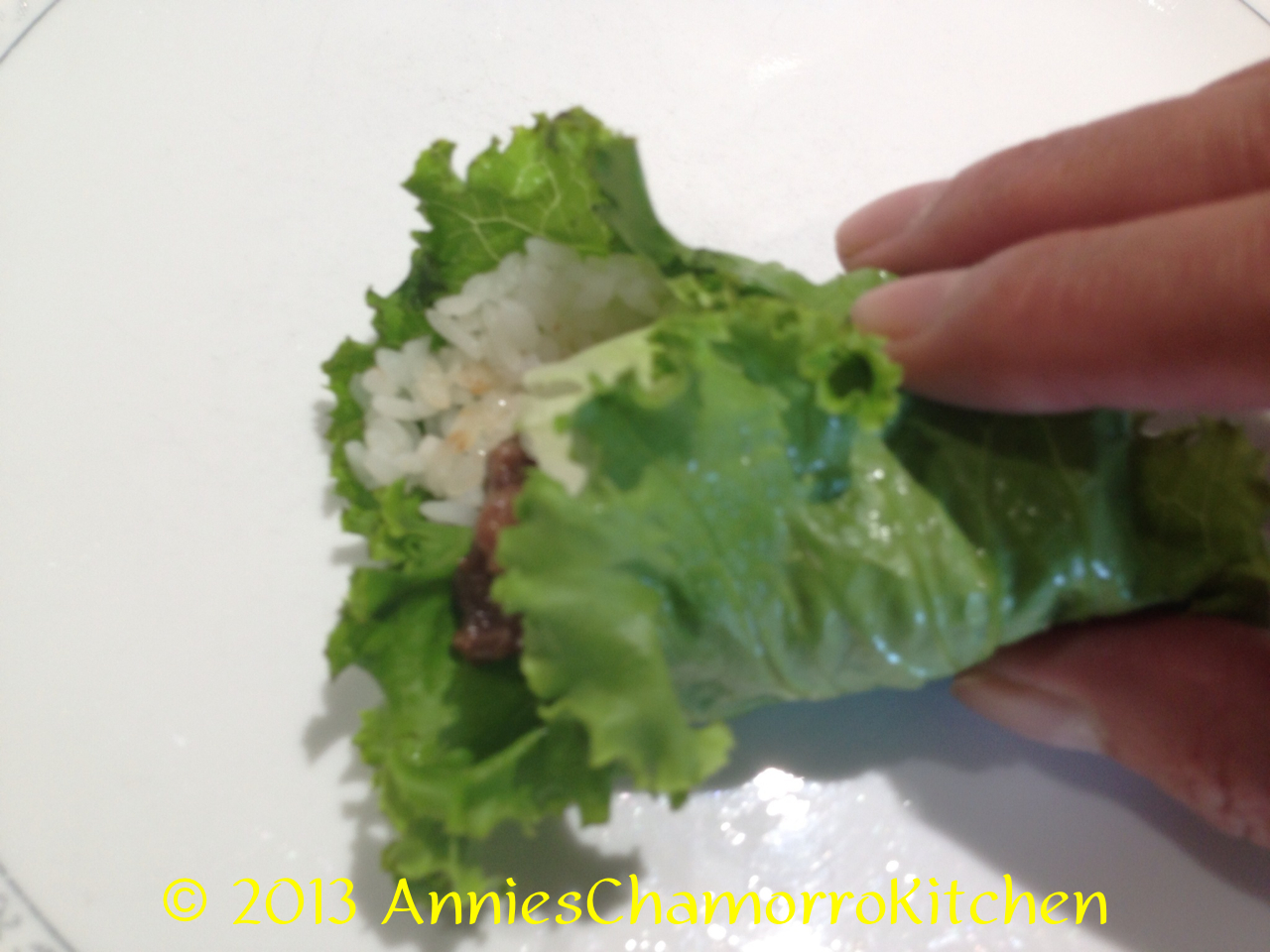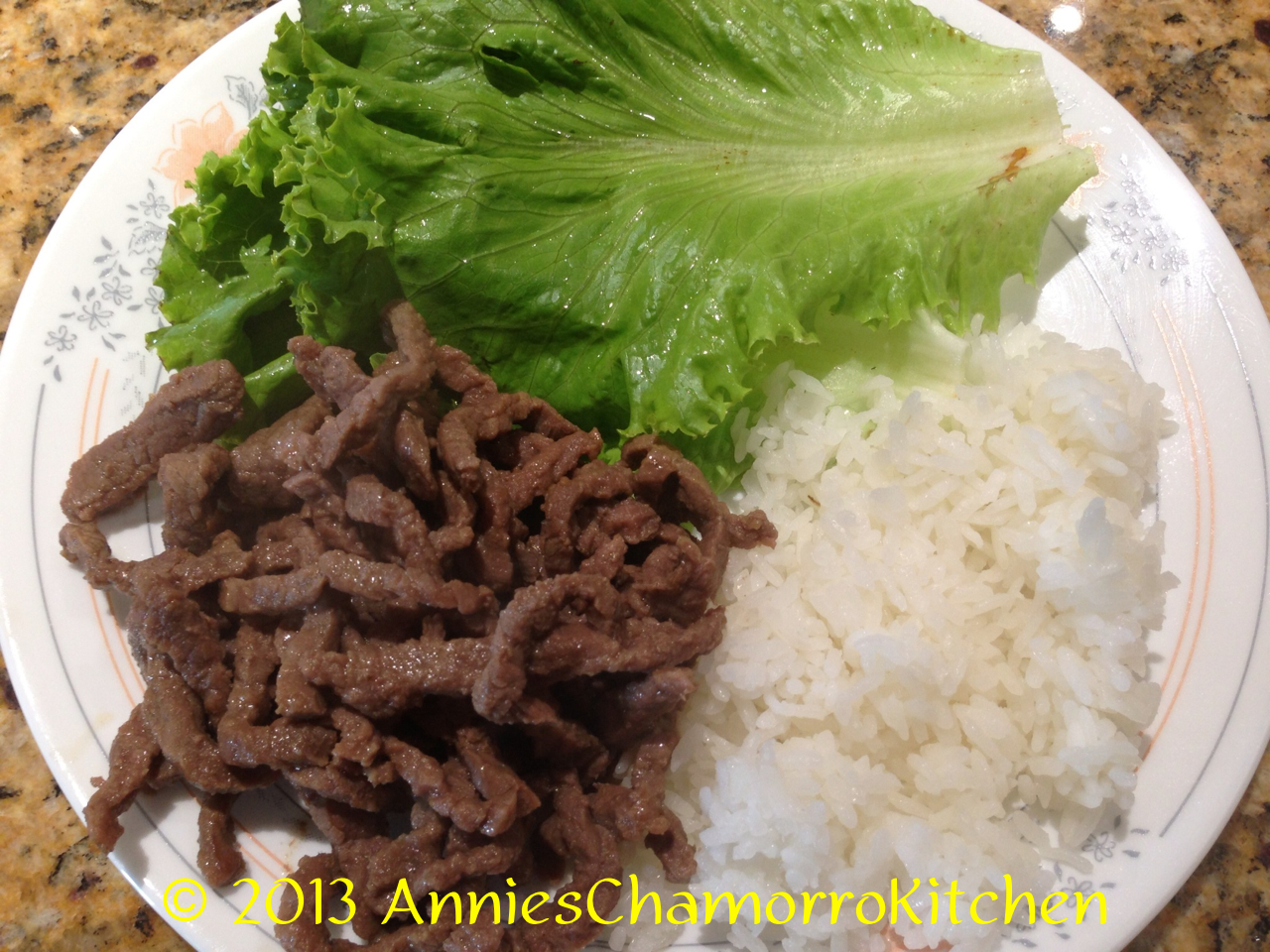
Arroz Caldo is a classic Filipino dish that made its way into Chamorro kitchens. This is my version of this delicious comfort food. It’s very quick and easy to put together. In fact, the longest part of making this dish is waiting for the rice to cook. 🙂
Give my recipe a try. I think you’ll like it. 🙂
Arroz Caldo
Ingredients:
- 2 tablespoons vegetable oil
- 2 tablespoons minced garlic
- 1 medium onion, diced
- 8 chicken tenders, cut into small pieces
- 1 tablespoon fish sauce
- 1/2 teaspoon achote powder
- 1/2 teaspoon ground ginger
- 4 tablespoons powdered chicken bouillon (or 4 bouillon cubes)
- 1/2 teaspoon black pepper
- 8 cups water
- 2 cups uncooked rice
- 1 can coconut milk
- 3 hard-boiled eggs, sliced
- 4 green onions, thinly sliced
- Hot pepper flakes
The only ingredient not shown above is the fish sauce. I like to use the brand that has three green crabs on the label; it’s not as pungent as most other brands of fish sauce. This is what the bottle looks like. You can find it at most Asian supermarkets.
Directions:
Place the oil in a large soup pot over medium heat. Once the oil is hot, add the garlic. Stir it around in the hot oil and fry until browned slightly. Place about 3/4 of the fried garlic in a small bowl and set aside.
Add the diced onions to the pot. Cook for a couple of minutes.
Add the chicken pieces to the pot. Stir to combine with the onions.
Add the fish sauce, achote powder, ginger, chicken bouillon, and black pepper to the pot.
Stir to combine the ingredients. Cook for a couple of minutes, just long enough for the chicken to be cooked through and is no longer pink.
Pour the water into the pot. Turn the heat up to medium high.
Add the rice, stir, then cover the pot.
The easy part is done. Now for the hard part — waiting for the rice to cook. You want to cook the Arroz Caldo for about 45 minutes–this is so the rice can begin to break down and really thicken the soup.
In the meantime, you can be boiling the eggs if you haven’t already done so.
This is what the rice looks like after only 10 minutes of cooking. Give the mixture a stir, put the cover back on, and wait patiently. Trust me, it’s worth the wait. 🙂
After 30 minutes, we’re almost there, but we still need to cook the soup for about 10-15 more minutes.
After 10-15 more minutes, the rice is cooked just how it should be and the soup is nice and thick — now it’s time to finish up the soup. Turn the heat down to low. Add the coconut milk to the pot.
Stir to mix the coconut milk into the soup. Cook only long enough to heat up the coconut milk — do not boil the soup. Remove from the heat.
It’s time to dish up some goodness! Pour some soup into a bowl. Garnish with green onions, fried garlic, and a couple of slices of hard-boiled eggs. If you’d like, add a lime wedge as well.
ENJOY!
